The Everyday Food That Slowly Destroys Your Liver
The prevalence of liver disease is rising, with over 100 million Americans affected by liver conditions such as nonalcoholic fatty liver disease (CDC statistics). The liver is vital for detoxification, metabolism, and nutrient storage. Yet, its gradual deterioration often goes unnoticed due to a lack of early symptoms. This silent progression makes liver damage especially challenging to identify and treat until it becomes severe. Understanding the foods and habits influencing liver health is now more critical than ever for preventing irreversible harm and maintaining overall well-being.
1. Sugar-Sweetened Beverages
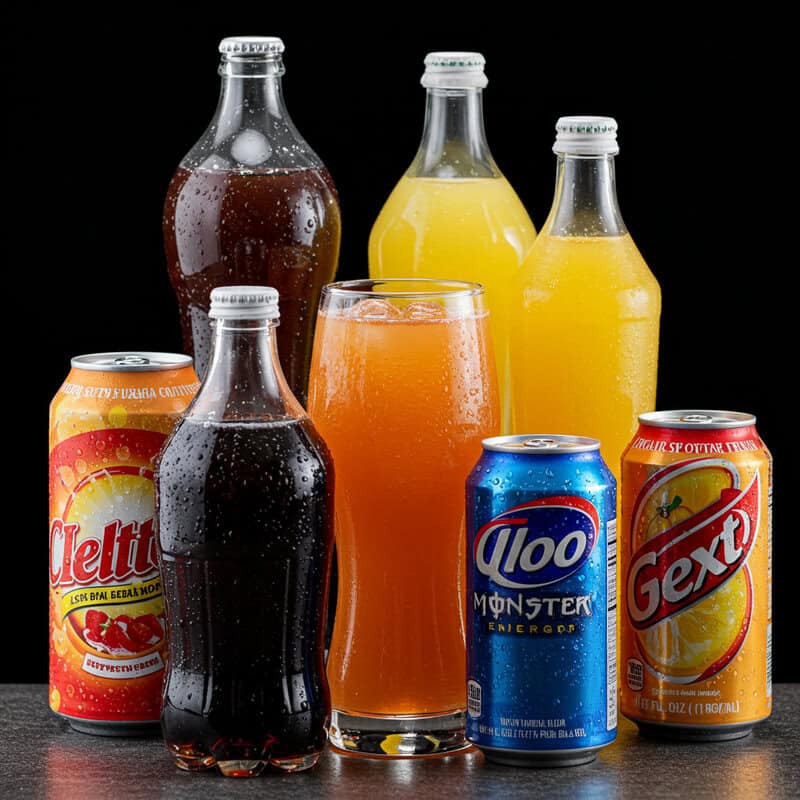
Sugar-sweetened beverages, including sodas, fruit drinks, and energy drinks, are a major source of added sugars in the modern diet. These drinks are loaded with fructose, a type of sugar that is primarily processed by the liver. When consumed in excess, fructose is rapidly converted to fat within liver cells, contributing to the development of non-alcoholic fatty liver disease (NAFLD). According to research, regular consumption of sugary drinks can lead to significant fat accumulation in the liver, even in people who are not overweight (NIH study). Drinking just two or more cans of soda daily has been linked to a much higher risk of NAFLD, making this habit as damaging as some forms of alcohol consumption. The World Health Organization recommends limiting intake of added sugars, especially from beverages, as a vital step to protect liver health (WHO Healthy Diet). Reducing or eliminating sugar-sweetened beverages from your diet is one of the most effective ways to lower your risk of liver disease and promote long-term health.
2. White Bread
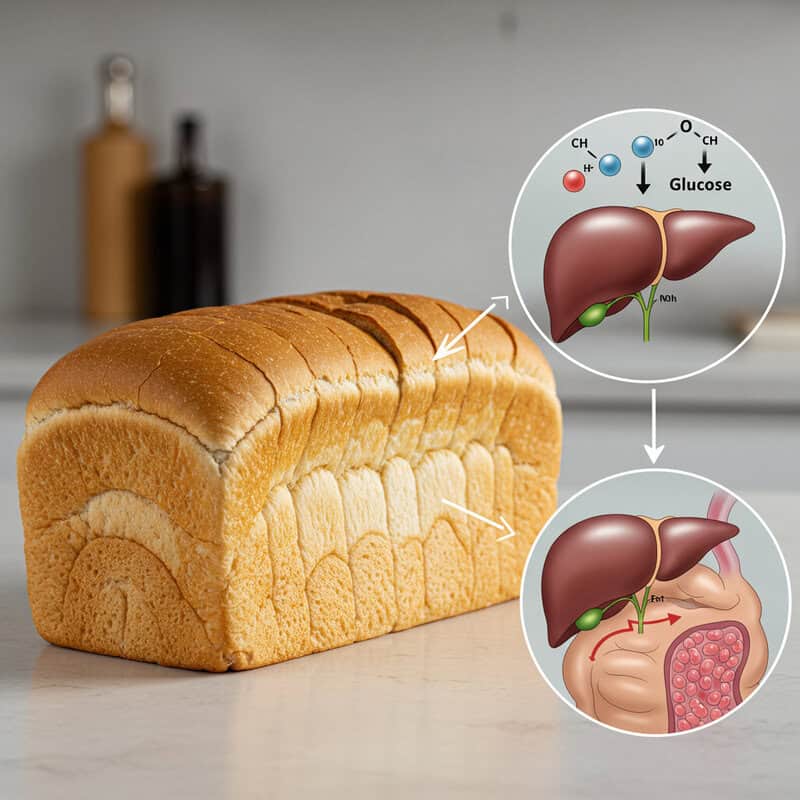
White bread, made from refined grains, is stripped of fiber and essential nutrients during processing. As a result, it is rapidly broken down into glucose in the digestive system, causing a swift spike in blood sugar levels. The liver must work overtime to process this surge in glucose, converting excess amounts into fat. Over time, this metabolic overload can contribute to fat accumulation in liver cells and elevate the risk of developing non-alcoholic fatty liver disease (NAFLD) (NIH PMC). In contrast, whole grain breads contain more fiber, which slows glucose absorption and reduces the strain on the liver. Studies show that diets rich in whole grains are linked to a lower risk of liver disease and better metabolic health (Harvard Nutrition Source). Making the switch from white bread to whole grain or less processed breads can be a simple yet powerful step in protecting liver function. Not only do whole grains support better glycemic control, but they also provide vital nutrients that promote overall health and reduce the risk of chronic disease.
3. Processed Meats
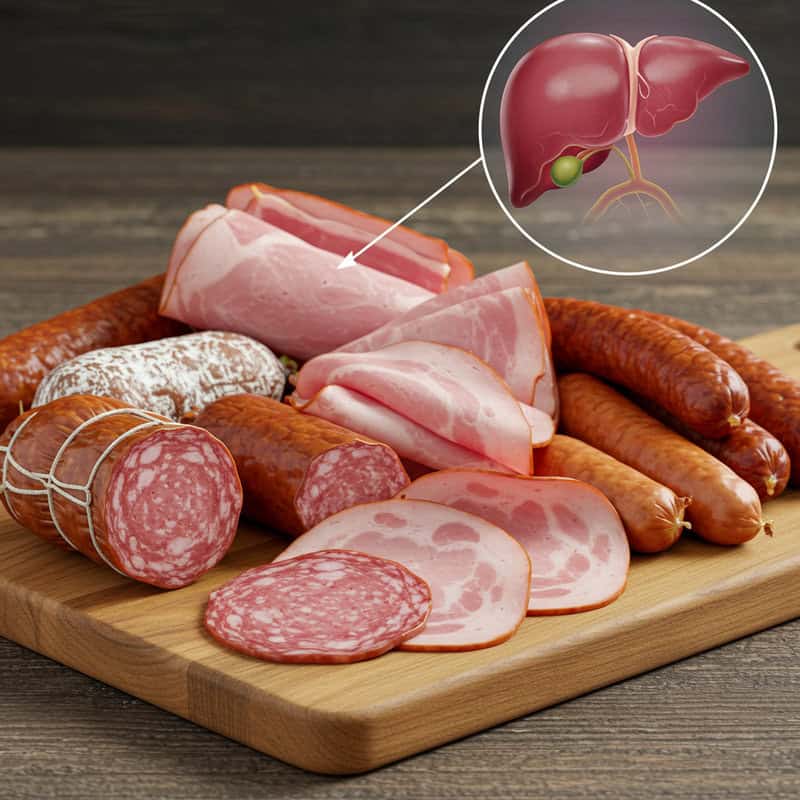
Processed meats such as deli ham, salami, bacon, and sausages are common staples in many households. However, these foods are often high in sodium and contain various preservatives, including nitrates and nitrites, which place a significant burden on the liver’s filtering system. Excessive sodium intake can lead to water retention and increased blood pressure, further straining liver and kidney function (CDC on Sodium). The liver must also work to break down and detoxify the chemical additives present in these meats. Over time, frequent consumption of processed meats has been linked to a greater risk of liver disease and other chronic health conditions (NIH PMC). Lunch meats are especially popular for their convenience, but their regular inclusion in the diet can silently impact liver health. Experts recommend moderating intake of processed meats and becoming diligent about reading labels to choose options with lower sodium and fewer artificial additives. Opting for fresh, lean cuts of meat or plant-based alternatives whenever possible can help support liver health and reduce the risk of long-term damage.
4. Fried Foods

Fried foods, especially those deep-fried in oils high in saturated or trans fats, are a significant contributor to liver inflammation and damage. When foods are cooked at high temperatures in oil, they absorb large amounts of unhealthy fats, which can accumulate in the liver and trigger inflammatory processes. Over time, this can lead to the development of fatty liver disease and impair the liver’s ability to function efficiently (NIH PMC). Fast food meals such as fried chicken, French fries, and onion rings are prime examples of foods that can silently harm liver health due to their high fat content and frequent consumption. These foods are not only calorie-dense but also often combined with other unhealthy ingredients that amplify their negative effects. To protect your liver, it is advisable to limit the intake of fried foods and instead opt for healthier cooking methods such as grilling, baking, or steaming. Choosing these alternatives reduces the amount of unhealthy fats in your diet and helps minimize inflammation, supporting long-term liver function. Making conscious choices when dining out or preparing meals at home can significantly reduce your risk of liver-related complications (American Heart Association).
5. Alcohol
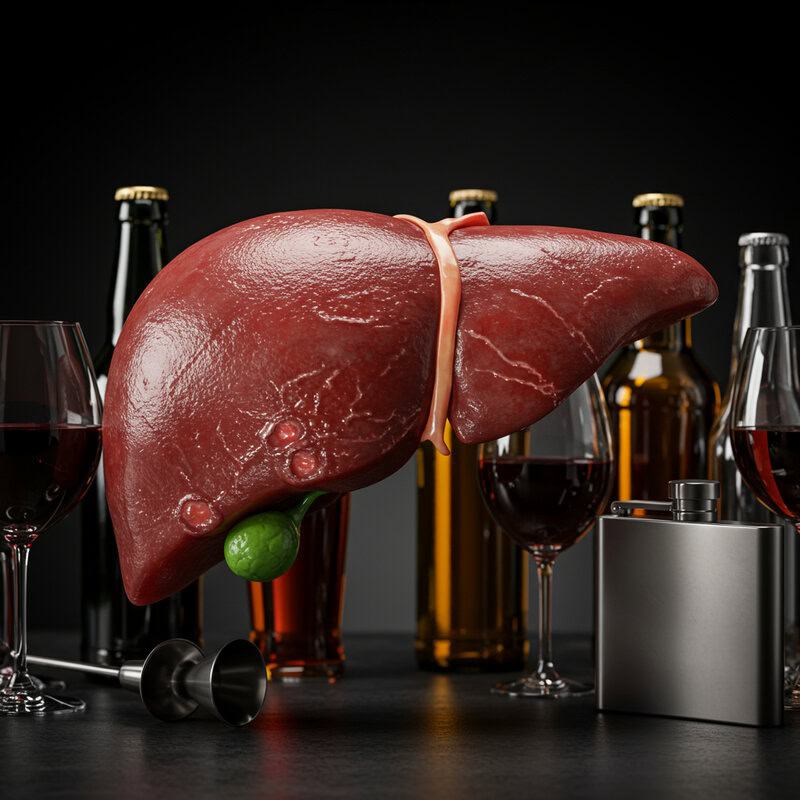
Alcohol is one of the most well-known substances that can severely damage the liver. When consumed, alcohol is metabolized almost exclusively by the liver, where it is broken down into acetaldehyde, a toxic compound that can inflame and scar liver tissue. Chronic or excessive drinking overwhelms the liver’s ability to process alcohol, resulting in fat buildup, inflammation, and eventually cirrhosis—a permanent scarring that can lead to liver failure (CDC on Liver Disease). Despite widespread awareness of these risks, alcohol consumption remains a staple in many social settings, often leading to unintentional overconsumption. The normalization of regular drinking, whether through social gatherings, celebrations, or daily routines, can make it easy to exceed safe limits. Health experts recommend that men limit themselves to two drinks per day and women to one, as defined by the CDC guidelines on alcohol use. Adhering to these recommendations and occasionally taking breaks from alcohol can significantly reduce the risk of liver damage and help preserve liver health over the long term. Awareness and moderation are key to preventing the silent progression of alcohol-related liver disease.
6. Candy

Candy is a popular treat enjoyed by both children and adults, but its high content of high fructose corn syrup (HFCS) can pose significant health risks, especially for the liver. HFCS is a sweetener that the liver must metabolize almost entirely, placing a considerable strain on this vital organ over time. Frequent snacking on candies, even in small amounts, leads to a cumulative intake of fructose that can rival the sugar load found in sodas and other sugary beverages. This constant influx of fructose forces the liver to convert the excess into fat, promoting the development of non-alcoholic fatty liver disease (NAFLD) (NIH: Fructose and NAFLD). Studies have shown that a regular candy habit can be just as harmful to the liver as drinking multiple cans of soda each day, increasing the risk of metabolic disorders and long-term liver damage. To protect your liver, it is crucial to practice mindful indulgence, treating candy as an occasional treat rather than a daily staple. Reading ingredient labels and choosing candies with less added sugar, or opting for naturally sweet alternatives, can help reduce the cumulative stress on your liver (Harvard Nutrition Source).
7. Fast Food Burgers
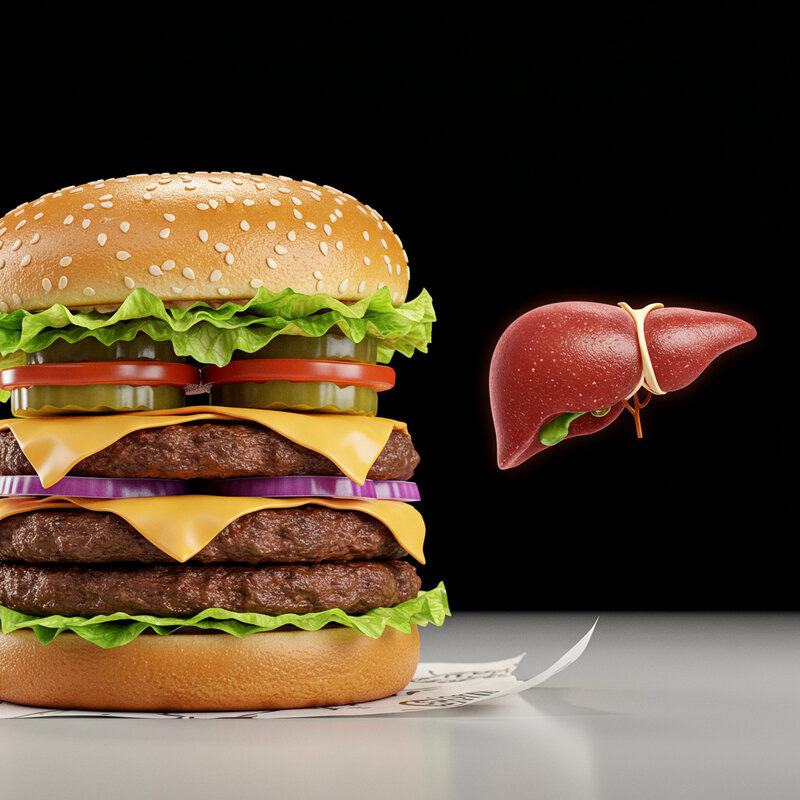
Fast food burgers are often loaded with saturated fats, refined carbohydrates, and a variety of chemical additives and preservatives. These ingredients can significantly contribute to the development and progression of fatty liver disease. Saturated fats, in particular, are known to elevate the accumulation of fat within liver cells, promoting inflammation, insulin resistance, and metabolic disturbances (NIH: Dietary Fats and NAFLD). The frequent consumption of fast food—such as eating burgers from popular chains several times a week—has been linked to a higher incidence of non-alcoholic fatty liver disease and other metabolic conditions (ScienceDaily: Fast Food and Liver Health). In addition, many fast food burgers contain additives and stabilizers that further tax the liver’s detoxification processes. To reduce your risk, consider limiting fast food intake and opting for homemade burgers prepared with lean meats, whole grain buns, and fresh vegetables. This not only lowers saturated fat and additive consumption but also gives you greater control over your ingredients. Occasional indulgence in fast food is unlikely to cause harm, but making it a regular habit can silently undermine your liver’s long-term health.
8. Pizza

Pizza is a beloved comfort food worldwide, but its typical ingredients can place a significant burden on the liver. Traditional pizzas often combine processed meats like pepperoni and sausage, which are high in sodium and preservatives, with large amounts of cheese that are rich in saturated fats. Additionally, most pizzas feature a refined wheat crust, which can spike blood sugar levels and prompt the liver to convert excess glucose into fat (NIH: Processed Foods and Liver Health). Frozen pizzas are particularly problematic because they frequently contain more preservatives, salt, and artificial additives than their fresh counterparts. Regular consumption of these heavily processed versions can contribute to fatty liver disease and metabolic syndrome. In contrast, making pizza at home with whole grain crusts, reduced cheese, and plenty of vegetables offers a much healthier alternative (EatRight.org: Pizza and Burgers). Balancing pizza nights by choosing lean protein toppings, loading up on veggies, and paying attention to portion size can help satisfy cravings while protecting your liver. Small changes in how you enjoy pizza can make a substantial difference to your overall health.
9. Ice Cream
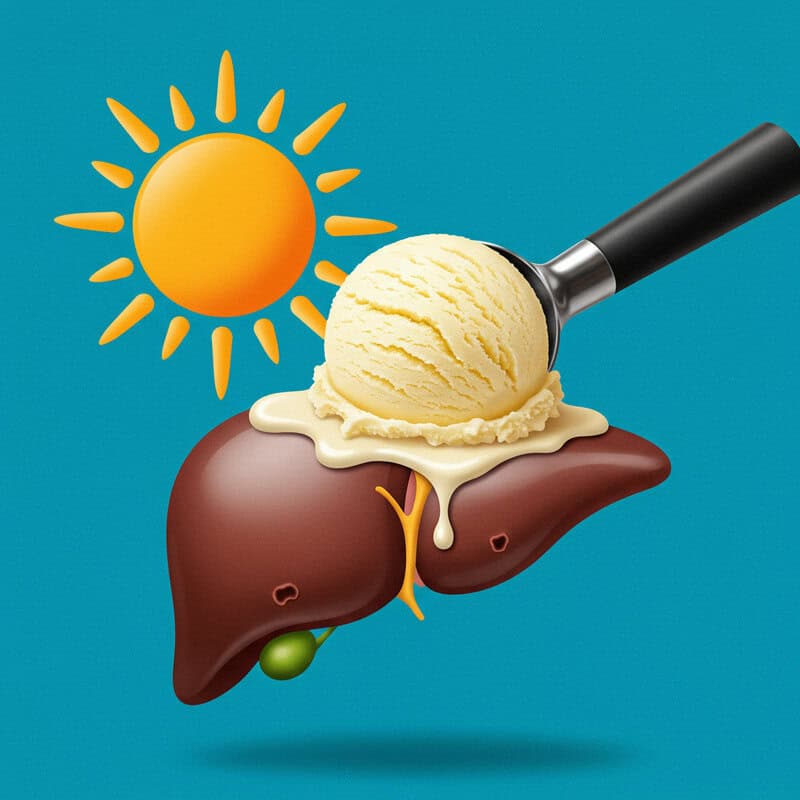
Ice cream is a popular treat, especially during the warmer months, but it presents a “triple threat” to liver health due to its high sugar content, rich cream, and various additives. The large amount of added sugars, often including high fructose corn syrup, places the liver under stress as it works to metabolize the excess fructose, leading to fat buildup and increased risk of non-alcoholic fatty liver disease (NIH: Fructose and Liver Disease). The heavy cream used in ice cream is a concentrated source of saturated fats, which further promote fat accumulation and inflammation within the liver. To enhance flavor and texture, many commercial ice creams also contain emulsifiers, artificial flavors, and preservatives that require additional processing by the liver. Regularly indulging in ice cream, especially during summer when consumption can spike, compounds these risks and can have a cumulative negative impact on liver function. For a healthier alternative, consider fruit-based frozen desserts such as homemade sorbets or “nice creams” made with blended frozen bananas. These options are lower in added sugars and unhealthy fats, and they provide fiber and antioxidants that support rather than burden the liver (Cleveland Clinic: Healthy Ice Cream Alternatives).
10. Energy Drinks
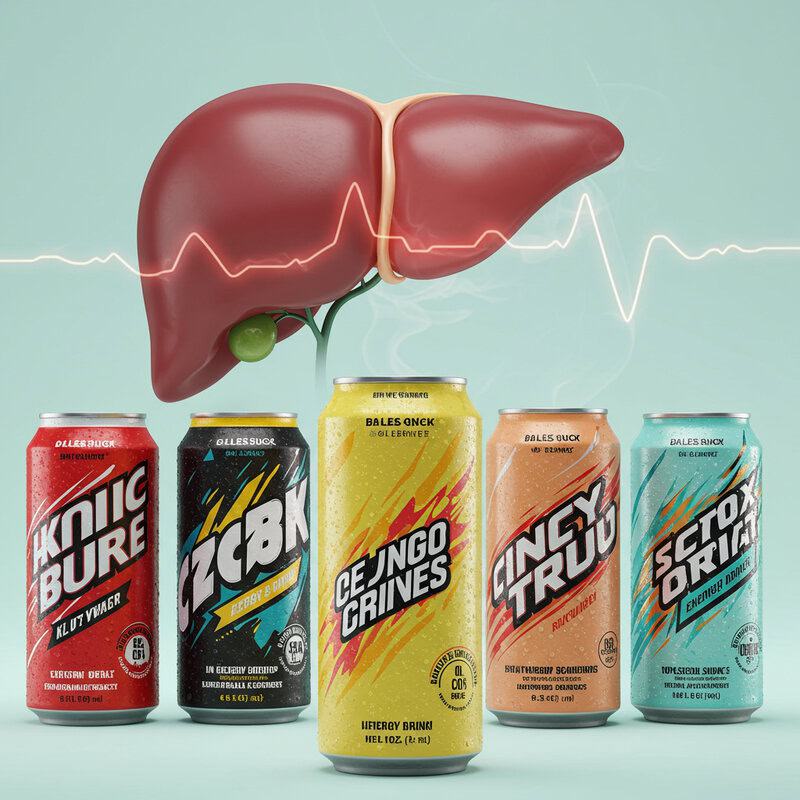
Energy drinks have surged in popularity, especially among young adults and teenagers, but their high concentrations of caffeine and sugar can put significant stress on the liver. These beverages often contain not only large amounts of added sugars—sometimes rivaling or exceeding the sugar content in sodas—but also stimulants like caffeine, taurine, and herbal extracts. The liver must work hard to metabolize both the sugar load and the various synthetic additives, which can lead to increased fat accumulation and heightened risk of liver inflammation or injury (NIH: Energy Drinks and Liver Injury). Reports of acute liver damage linked to excessive or chronic consumption of energy drinks have been increasing, particularly in younger populations who may consume these beverages in large quantities for academic or athletic performance (CDC: Energy Drink Consumption). Moderation is key; regularly consuming energy drinks can silently undermine liver function over time. To support liver health, consider natural alternatives for a boost of energy, such as drinking water, herbal teas, or eating whole fruits. These options provide hydration and nutrients without the excessive sugar and stimulants that challenge the liver.
11. Baked Goods

Commercially produced baked goods such as pastries, cookies, and cakes are often packed with trans fats and added sugars—two ingredients that can be especially damaging to the liver. Trans fats, commonly found in partially hydrogenated oils, have been linked to increased liver fat, inflammation, and a higher risk of non-alcoholic fatty liver disease (NAFLD) (NIH: Trans Fats and Liver Health). Added sugars, especially fructose, further compound the problem by overloading the liver’s metabolic capacity and promoting fat buildup. Bakery treats are typically especially high in these unhealthy components, making regular consumption a silent contributor to liver stress and metabolic disorders.
Compared to store-bought pastries and cookies, homemade baked goods can be made with healthier ingredients and less sugar. Simple ingredient swaps—such as using whole grain flour instead of refined flour, opting for natural sweeteners like honey or mashed bananas, and replacing butter or margarine with heart-healthy oils—can significantly reduce the burden on your liver. By baking at home, you can control both the quality and the quantity of the fats and sugars in your treats, supporting better long-term liver health (American Heart Association: Baking with Healthy Oils).
12. Potato Chips
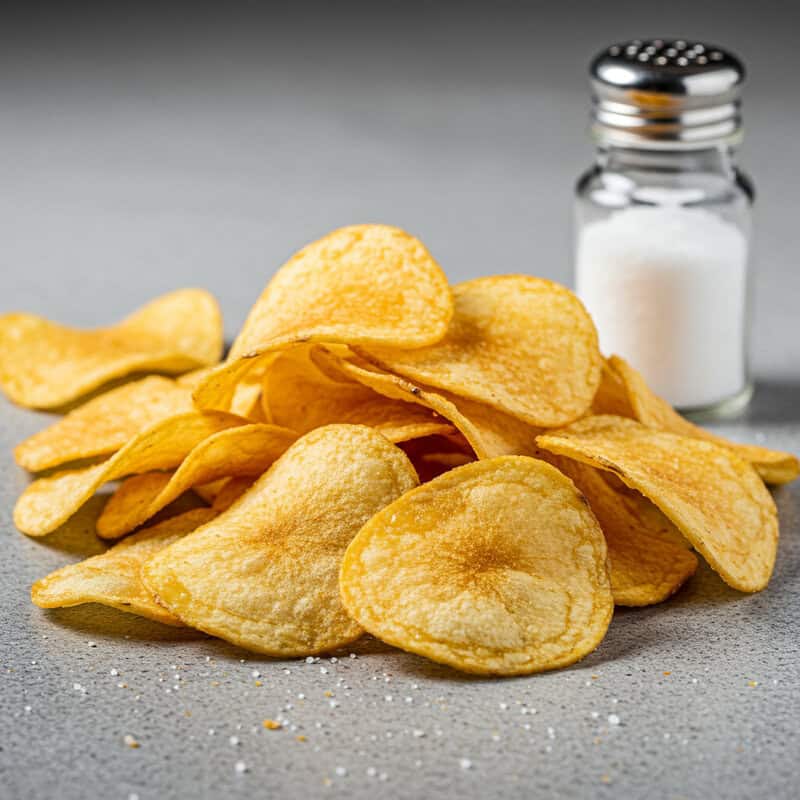
Potato chips are a popular snack, but their high salt and fat content can indirectly tax the liver. Most chips are deep-fried in oils high in saturated or trans fats, which can promote fat accumulation in the liver and contribute to inflammation over time (NIH: Dietary Fats and Liver Disease). Additionally, the excessive sodium in chips can lead to fluid retention and increased blood pressure, putting extra strain on the liver and cardiovascular system (CDC: Sodium in Food). Regular snacking on chips, especially when consumed in large quantities or as a daily habit, can silently contribute to the progression of liver-related issues.
For those who crave crunchy snacks, there are healthier alternatives to traditional potato chips. Baked chips, air-popped popcorn, or homemade veggie chips made from sweet potatoes, beets, or kale can offer similar satisfaction with less fat and sodium. Reading nutrition labels and choosing snacks with minimal added salt and healthier oils can further reduce the burden on your liver. Making mindful choices when it comes to snacking can help protect your liver and support overall health in the long run.
13. White Rice
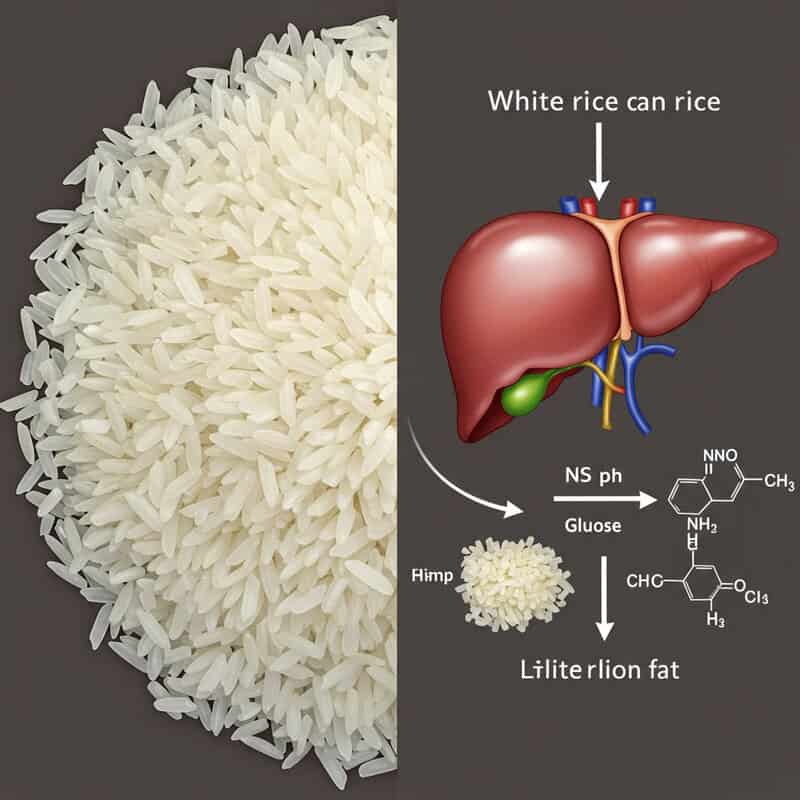
White rice, a staple in many diets across the globe, undergoes heavy refining that removes the fibrous bran and nutrient-rich germ. This process transforms it into a simple carbohydrate that is rapidly digested and absorbed, causing a quick spike in blood sugar levels. The liver plays a key role in managing this influx of glucose, converting any excess into fat for storage. Over time, consistent consumption of white rice can contribute to increased liver fat and elevate the risk of non-alcoholic fatty liver disease (NAFLD) (NIH: Diet and NAFLD). Studies have shown that populations with high white rice intake face greater rates of metabolic syndrome and related liver complications.
In contrast, brown rice retains its natural fiber, vitamins, and minerals, leading to a slower, more controlled release of glucose. This reduces the strain on the liver and supports better glycemic control. Gradually substituting white rice with brown rice or other whole grains such as quinoa or barley can significantly reduce the risk of liver fat buildup (Harvard Nutrition Source: Whole Grains). Making incremental changes to your staple foods is an effective way to protect your liver and improve overall health.
14. Sweetened Breakfast Cereals
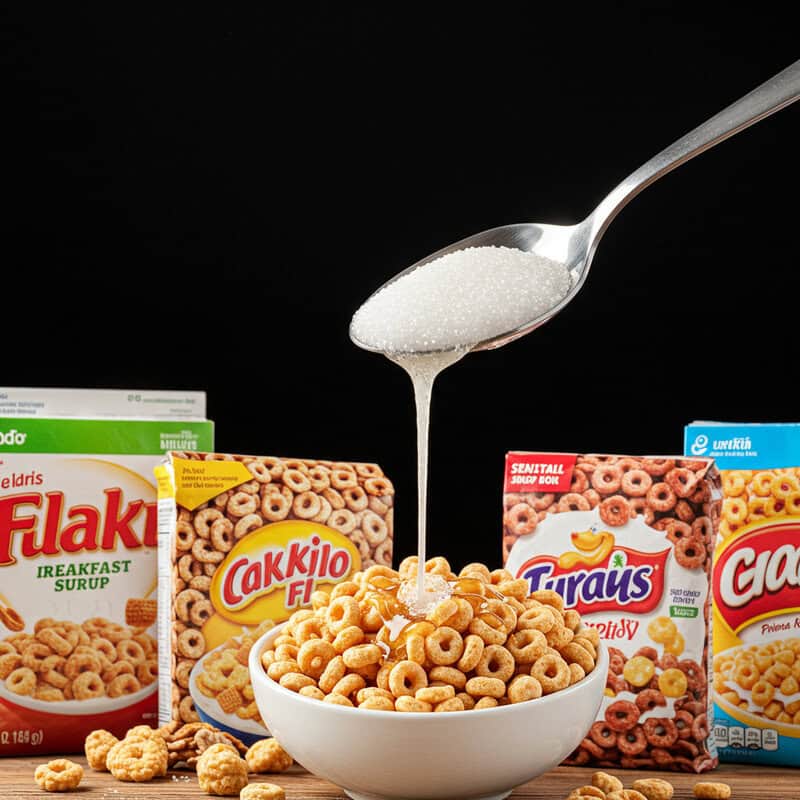
Many popular breakfast cereals are loaded with added sugars and contain very little dietary fiber, creating a combination that can be especially harmful to liver health. The high sugar content in these cereals—often in the form of high fructose corn syrup or other refined sugars—causes rapid spikes in blood glucose, which the liver must work to process. This sugar overload can lead to increased fat storage within the liver, contributing to the development of non-alcoholic fatty liver disease (NAFLD) (NIH: Diet and NAFLD). Low fiber content in these cereals also means there is little to slow down the absorption of sugar, further taxing the liver and promoting unhealthy metabolic changes.
Comparing nutrition labels reveals that some cereals contain as much as 20 grams of sugar per serving, while providing only a gram or two of fiber. In contrast, whole grain or unsweetened cereals—such as plain oatmeal or bran flakes—offer more fiber and far less sugar, supporting better liver health. For a healthier breakfast, look for cereals with at least 3 grams of fiber and less than 6 grams of sugar per serving, or opt for naturally sweetened options with fresh fruit (American Heart Association: Reading Nutrition Labels).
15. Flavored Yogurts
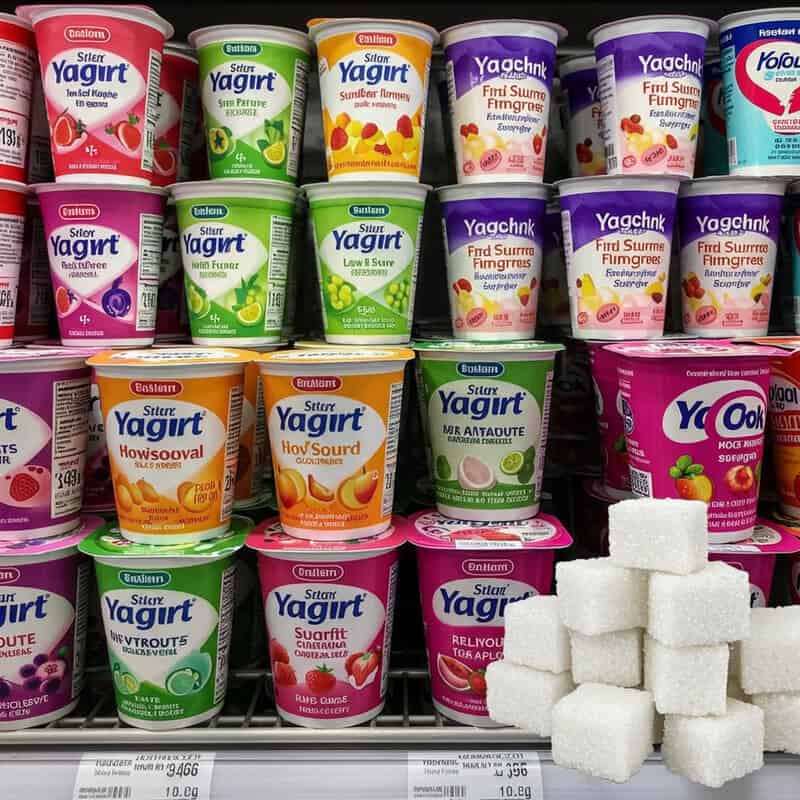
Flavored yogurts, particularly those labeled as fruit-flavored or low-fat, often contain surprisingly high amounts of added sugars. These hidden sugars, frequently in the form of sucrose or high fructose corn syrup, can make a single serving of flavored yogurt rival the sugar content found in desserts or soft drinks. Consuming these yogurts regularly can overload the liver with excess fructose, prompting the organ to convert the surplus into fat. Over time, this process contributes to the development of non-alcoholic fatty liver disease (NAFLD) and disrupts healthy metabolism (NIH: Fructose and Liver Disease).
In comparison, plain yogurt contains little to no added sugar and retains the beneficial probiotics that support gut and liver health. By choosing plain yogurt and adding your own fresh fruit, you can control the sweetness while gaining the benefits of natural fiber and antioxidants. Reading labels is crucial—some flavored yogurts contain as much as 20 grams of sugar per serving. Opting for unsweetened or Greek yogurt and mixing in berries or sliced fruit is a simple way to enjoy the taste and health benefits of yogurt without putting unnecessary stress on your liver (Harvard Nutrition Source: Yogurt).
16. Canned Soups
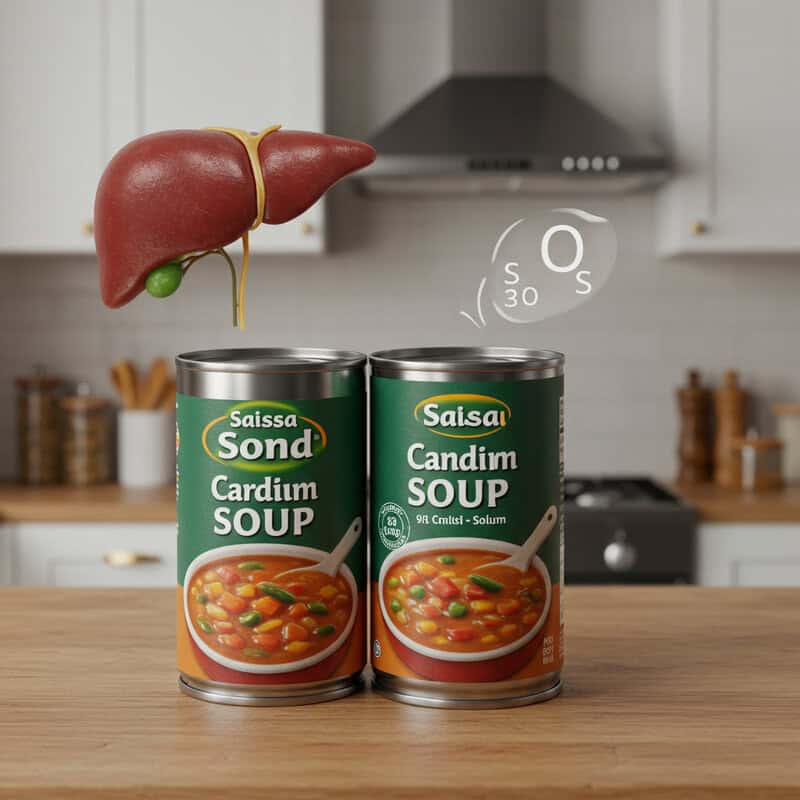
Canned soups are a convenient meal choice for busy schedules, but they often contain very high levels of sodium and preservatives. Excessive sodium intake can cause the body to retain water and elevate blood pressure, both of which put additional strain on the liver and kidneys. Many canned soups also include chemical preservatives, such as monosodium glutamate (MSG) and artificial flavorings, that require the liver to work harder to detoxify and process these substances (NIH: Preservatives and Liver Health). Over time, a diet high in salty, processed foods like canned soups can contribute to liver inflammation, fatty liver disease, and other metabolic complications.
Health experts recommend checking nutrition labels and selecting low-sodium options when purchasing canned soups, as some varieties can contain over 900 milligrams of sodium per serving (CDC: Sodium in Food). Better yet, making soups at home allows you to control the amount of salt and avoid artificial additives altogether. Using fresh vegetables, lean proteins, herbs, and spices can help you create flavorful, satisfying soups that support liver health rather than compromise it. Choosing DIY or low-sodium soups is a simple way to reduce your liver’s workload and improve your overall diet.
17. Margarine
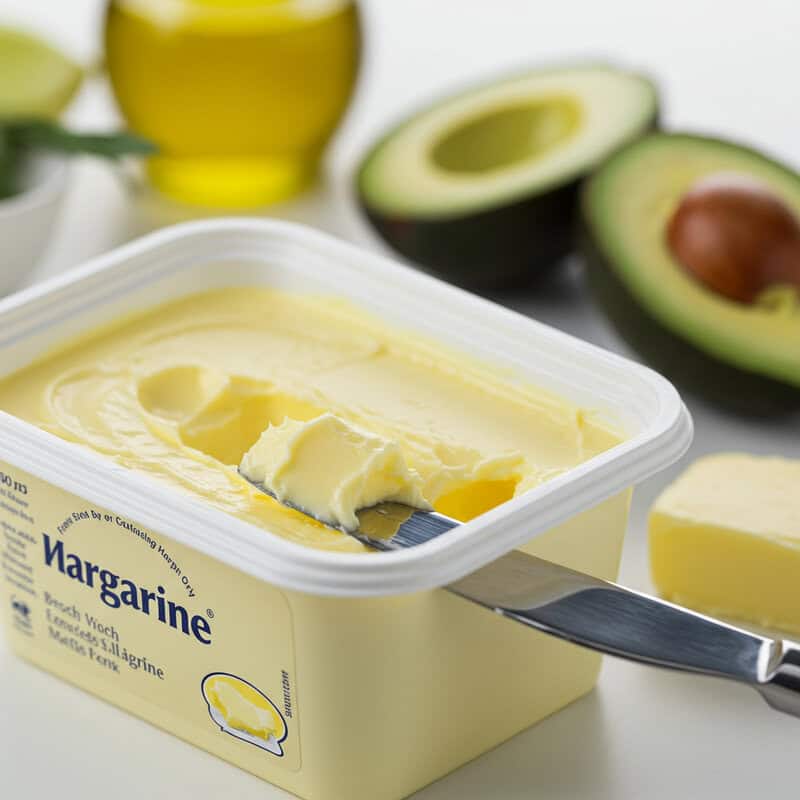
Margarine, once touted as a healthier alternative to butter, has come under scrutiny due to the presence of partially hydrogenated oils in many traditional formulations. These oils are a primary source of artificial trans fats, which have been shown to significantly increase inflammation and fat accumulation in the liver. Regular consumption of trans fats is closely linked to a higher risk of non-alcoholic fatty liver disease (NAFLD) and other metabolic disorders (NIH: Trans Fats and Liver Health). The process of hydrogenation alters the chemical structure of vegetable oils, making them more shelf-stable but also more detrimental to liver function.
While butter is high in saturated fat, it does not contain artificial trans fats. Some newer margarine products have been reformulated to eliminate trans fats, using non-hydrogenated oils such as olive or canola oil instead. When choosing a spread, it is important to read labels carefully and opt for products labeled “trans fat free” or those made with heart-healthy oils. Both butter and traditional margarine should be used in moderation, but choosing modern, non-hydrogenated margarine can help reduce the risk of liver inflammation and support overall cardiovascular and liver health (American Heart Association: Butter vs. Margarine).
18. Sports Drinks
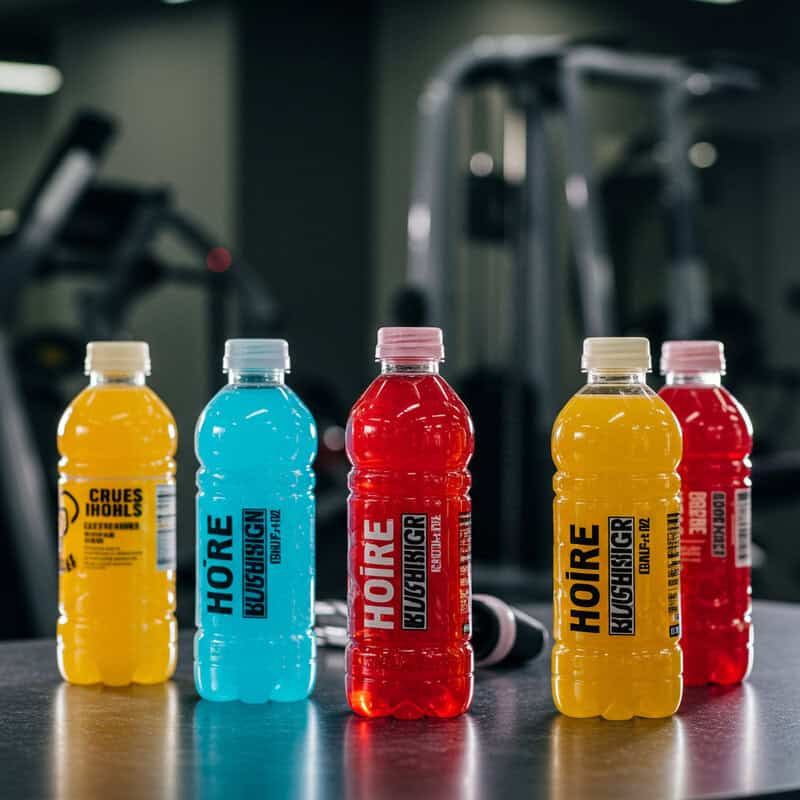
Sports drinks are widely marketed as essential for hydration and electrolyte replenishment, particularly after exercise. However, many of these beverages contain high levels of added sugars, which can quickly add up, especially among those who consume them regularly outside of intense physical activity. The liver is responsible for metabolizing much of this sugar, particularly fructose, which is often used in sports drinks. Excessive intake of these sugars can prompt the liver to convert them into triglycerides—fat molecules that accumulate in the liver and bloodstream, increasing the risk of non-alcoholic fatty liver disease (NAFLD) and other metabolic issues (NIH: Fructose and Liver Disease).
Despite their popularity, most people do not require the high sugar and calorie content found in sports drinks, especially outside of endurance events or prolonged, intense exercise. For everyday hydration, water remains the best choice. If electrolytes are needed—due to extended exercise, heat, or illness—unsweetened electrolyte solutions or homemade drinks with minimal added sugars are preferable. Reading labels carefully and opting for products with little or no added sugar can help protect the liver and promote overall health (Harvard Nutrition Source: Healthy Drinks).
19. Flavored Coffee Drinks

Flavored coffee drinks from popular coffee shops have become a daily ritual for many, but these beverages often contain a staggering amount of added sugar and calories. Drinks like caramel lattes, frappuccinos, and mochas can contain 30 to 60 grams of sugar per serving—equivalent to or even exceeding the sugar in a can of soda. This sugar overload, much of it in the form of syrups and sweetened creamers, requires the liver to metabolize large amounts of fructose and glucose, which can lead to increased fat production and storage in the liver (NIH: Fructose and Liver Disease). Frequent consumption of these high-calorie beverages can silently contribute to the development of non-alcoholic fatty liver disease (NAFLD) and other metabolic issues.
For example, a standard 16-ounce flavored latte or blended frappuccino can deliver more than 300 calories and a full day’s recommended limit for added sugar. To make your coffee habit healthier, opt for plain brewed coffee or espresso, and add just a splash of milk or a sprinkle of cinnamon. If you crave flavor, request fewer pumps of syrup or choose sugar-free options. Small changes can significantly reduce the liver’s sugar burden while allowing you to enjoy your morning ritual (American Heart Association: Sugar 101).
20. Granola Bars
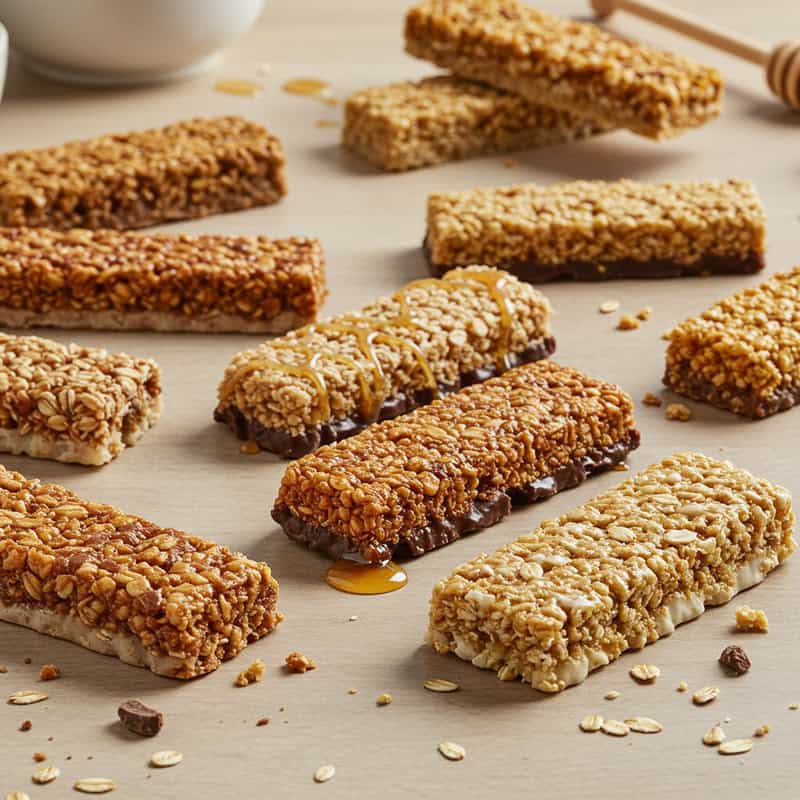
Granola bars are often marketed as a healthy snack or convenient breakfast option, but many commercially available varieties contain high levels of added sugars and syrups. Ingredients such as high fructose corn syrup, honey, brown rice syrup, and even chocolate chips can significantly increase the sugar content, which the liver must process and convert, often leading to increased fat storage and a higher risk of non-alcoholic fatty liver disease (NAFLD) (NIH: Fructose and Liver Disease). Despite their wholesome image, some granola bars can contain as much sugar as a candy bar, undermining the liver’s health and contributing to metabolic problems when consumed regularly.
To avoid hidden sugars, it is crucial to read nutrition labels carefully, paying attention to both total sugar content and the order of ingredients. Look for bars with minimal added sugars, whole grains, nuts, and seeds for sustained energy and better nutrient balance. Alternatively, making simple homemade granola bars allows you to control the ingredients, reduce added sweeteners, and incorporate fiber-rich components such as oats and dried fruit. Homemade options are not only healthier but also more customizable to your dietary needs (Harvard Nutrition Source: Healthy Snacks).
21. Store-Bought Salad Dressings
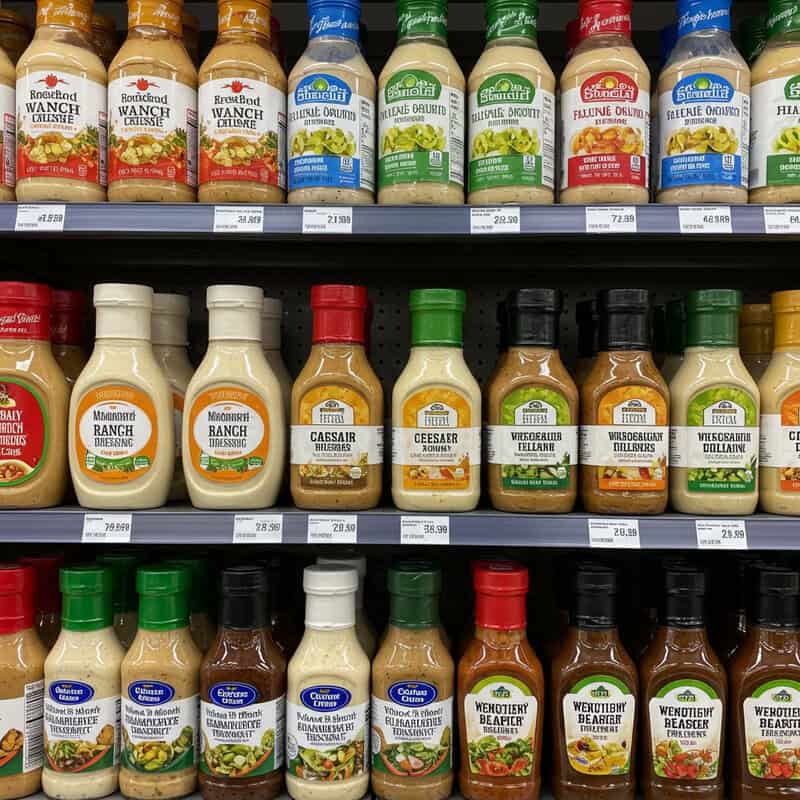
Store-bought salad dressings, while convenient, often contain a surprising amount of added sugars, unhealthy fats, and artificial preservatives. Many popular bottled dressings—especially creamy varieties like ranch, Caesar, or thousand island—are made with partially hydrogenated oils, a source of trans fats known to increase liver inflammation and fat accumulation (NIH: Trans Fats and Liver Health). In addition, even vinaigrettes can contain high-fructose corn syrup or other sweeteners, which further tax the liver and contribute to the risk of non-alcoholic fatty liver disease (NAFLD).
Comparatively, homemade salad dressings offer a much healthier alternative. Simple vinaigrettes made from extra virgin olive oil, vinegar or lemon juice, and herbs provide beneficial fats and antioxidants that support liver and heart health. When preparing dressings at home, you can control the type and amount of oil, avoid unnecessary sugars, and eliminate artificial additives. Reading labels on bottled dressings is crucial—look for varieties with minimal ingredients, no trans fats, and less than 2 grams of sugar per serving. By being mindful of what goes into your salad dressing, you can enjoy flavorful salads that nourish rather than burden your liver (Harvard Nutrition Source: Salad Dressings).
22. Frozen Dinners
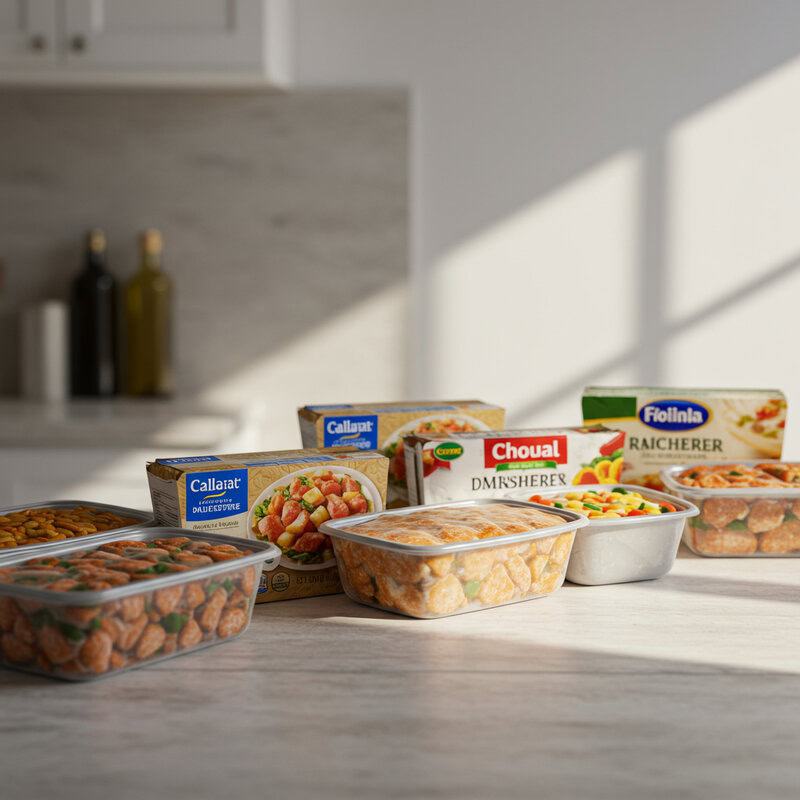
Frozen dinners, also known as ready meals or TV dinners, are a convenient solution for busy lifestyles but often come with a heavy load of preservatives, sodium, and unhealthy fats. Many of these pre-packaged meals contain additives and preservatives to extend shelf life, which the liver must continually work to detoxify. High sodium content is another common issue—some frozen dinners contain over half the daily recommended intake in a single serving, contributing to fluid retention and increased blood pressure, both of which place additional stress on the liver (CDC: Sodium in Processed Foods). Moreover, these meals frequently include processed meats and saturated fats, further increasing the risk of fatty liver disease and metabolic complications (NIH: Processed Foods and Metabolic Health).
The cumulative effect of regularly consuming frozen dinners can silently undermine liver health over time. Experts advise using these meals occasionally rather than as a dietary staple and choosing options with lower sodium, healthier fats, and fewer artificial additives. Careful label scrutiny and supplementing frozen meals with fresh vegetables or a salad can help minimize potential harm while maintaining convenience.
23. Syrups (Pancake, Maple-Flavored)
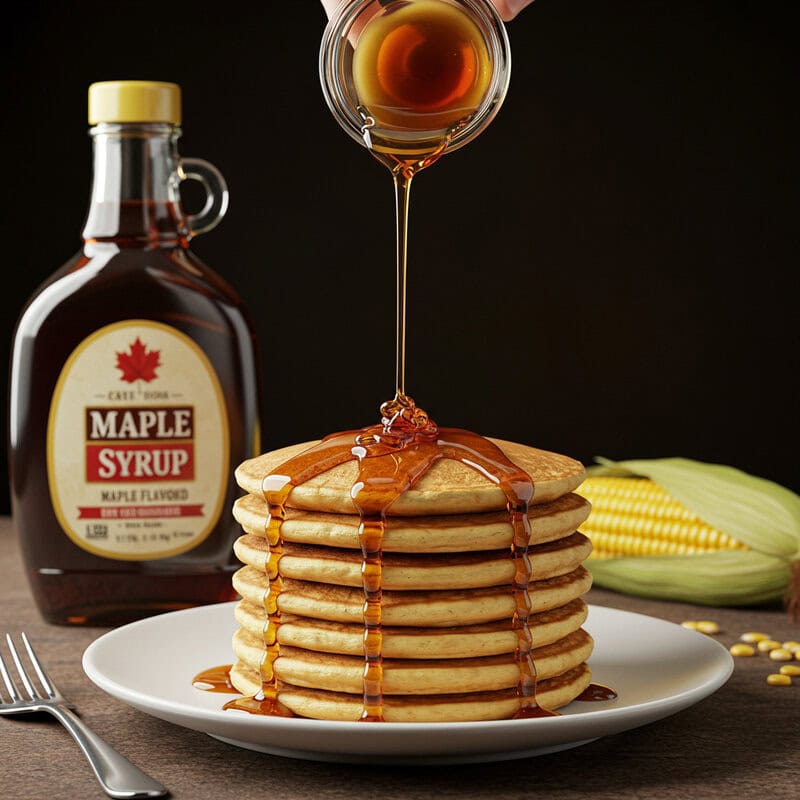
Pancake and maple-flavored syrups are popular breakfast condiments, but they contain highly concentrated sugars, often in the form of high fructose corn syrup or other refined sweeteners. These sugars are rapidly absorbed and processed by the liver, which converts excess fructose into fat. Over time, this can result in increased fat accumulation within the liver, raising the risk of non-alcoholic fatty liver disease (NAFLD) and other metabolic issues (NIH: Fructose and Liver Disease). Many store-bought pancake syrups are almost entirely artificial, offering little nutritional value beyond their sugar content.
In contrast, real maple syrup contains some beneficial minerals, such as manganese and zinc, but it is still a source of concentrated sugar and should be used sparingly. To minimize the impact on liver health, practice portion control by measuring out syrup rather than pouring freely, and consider diluting syrup with fresh fruit or using smaller amounts to add sweetness. Reading ingredient labels and choosing pure maple syrup over artificially flavored varieties can also help reduce unnecessary additives. Ultimately, limiting the frequency and quantity of all syrups is key to protecting your liver and supporting overall metabolic health (Harvard Nutrition Source: Added Sugar).
24. Artificial Sweeteners
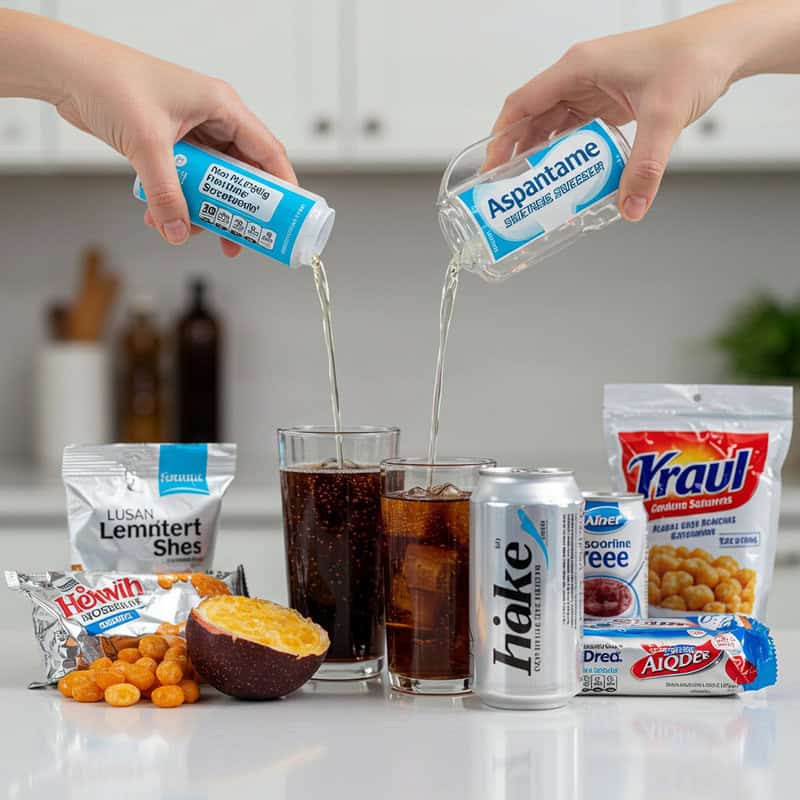
Artificial sweeteners such as aspartame, sucralose, and saccharin are commonly used as sugar substitutes in diet sodas, sugar-free snacks, and low-calorie products. While these sweeteners are generally considered safe by regulatory agencies, emerging research suggests that their long-term impact on liver health is not fully understood. Some animal studies and recent reviews indicate that certain artificial sweeteners may alter gut microbiota or metabolic pathways, potentially contributing to liver inflammation or fat accumulation in susceptible individuals (NIH: Artificial Sweeteners and Liver). However, evidence in humans remains inconclusive, with some studies finding no significant effects and others raising concerns about possible links to metabolic dysfunction.
Given the growing use of artificial sweeteners and the mixed evidence regarding their safety, especially for liver health, experts encourage moderation. Until more comprehensive, long-term human studies are available, it is wise to limit excessive consumption of artificially sweetened products. Opting for naturally sweet foods such as fruit, or using small amounts of natural sweeteners like honey or pure maple syrup, can minimize potential risks. Staying informed about ongoing research and practicing moderation will help protect liver health while still allowing for occasional sweetness in the diet (Harvard Nutrition Source: Artificial Sweeteners).
25. Sweetened Nut Butters
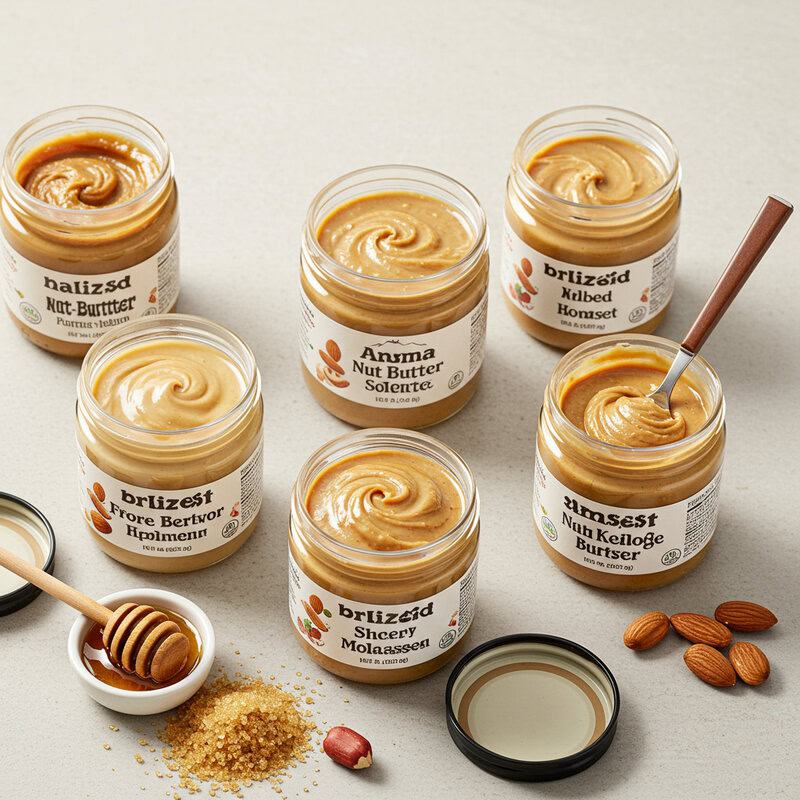
Nut butters such as peanut and almond butter are often perceived as wholesome foods, packed with protein and healthy fats. However, many commercial varieties—especially those labeled as “creamy” or “honey roasted”—contain added sugars and sometimes even hydrogenated oils to enhance flavor and texture. These added sugars, such as cane sugar, honey, or molasses, can subtly increase daily sugar intake, prompting the liver to metabolize more fructose and convert the excess into fat. Over time, frequent consumption of sweetened nut butters can contribute to fat accumulation within the liver and elevate the risk of non-alcoholic fatty liver disease (NAFLD) (NIH: Fructose and Liver Disease).
The health impact of nut butters depends largely on ingredient quality and portion size. Unsweetened nut butters made from just nuts and perhaps a touch of salt offer healthy fats and protein without unnecessary sugars. Consuming these spreads in moderation supports satiety and balanced nutrition without overburdening the liver. Reading labels to avoid added sugars and being mindful of portion sizes—typically two tablespoons per serving—are simple strategies to preserve both liver health and the nutritional benefits of nut butters (Harvard Nutrition Source: Nuts and Peanuts).
26. Flavored Milk
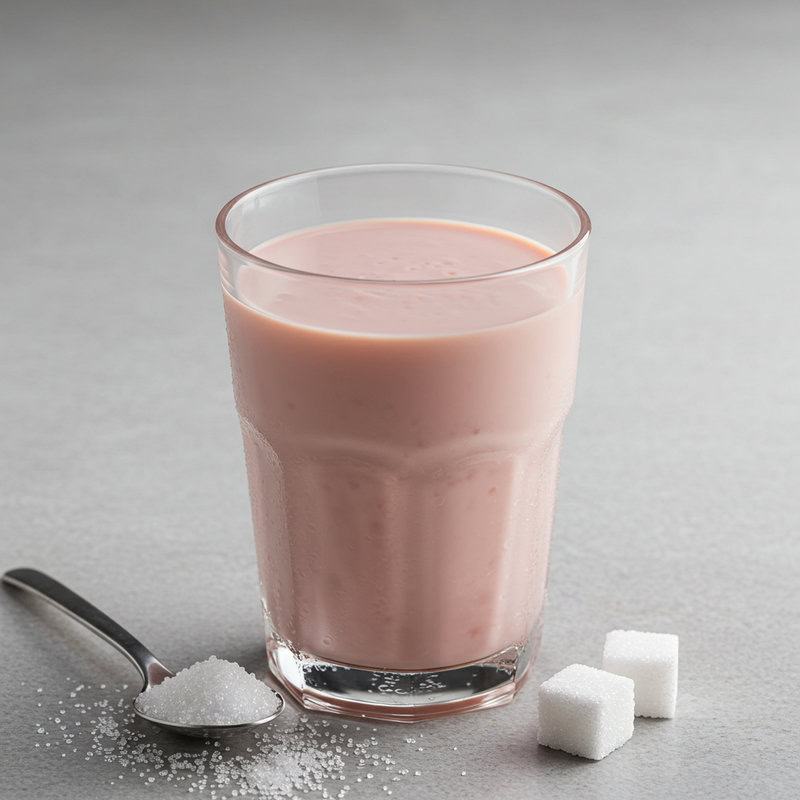
Flavored milks such as chocolate and strawberry varieties are popular beverages among children and adolescents, but they often contain significant amounts of added sugars. A single cup of chocolate milk can contain up to 12 grams of added sugar, in addition to the naturally occurring lactose found in plain milk (CDC: Added Sugars in Drinks). These extra sugars are quickly absorbed and processed by the liver, increasing the risk of fat buildup and contributing to the early onset of non-alcoholic fatty liver disease (NAFLD), particularly in younger populations who may consume these drinks daily. Studies suggest that sugar-sweetened beverages, including flavored milks, are linked to higher rates of pediatric liver fat and metabolic problems (NIH: Fructose and Liver Disease).
Plain milk, on the other hand, provides essential nutrients—such as calcium, vitamin D, and protein—without the burden of added sugars. For those seeking extra flavor, consider adding a sprinkle of unsweetened cocoa powder or blending milk with fresh fruit for a naturally sweet and nutrient-rich alternative. Encouraging children and adults alike to choose plain or lightly flavored milk helps reduce unnecessary sugar intake and supports long-term liver health.
27. Pastries

Pastries such as croissants, danishes, and turnovers are known for their irresistible combination of flaky layers and sweet fillings. However, these treats typically deliver a potent mix of refined sugars and saturated fats, both of which place a significant burden on liver function. The high sugar content, often from syrups, jams, or icings, is rapidly absorbed and processed by the liver, where excess fructose is converted into fat. Meanwhile, the rich buttery dough is loaded with saturated fats that further promote fat accumulation and inflammation in liver cells (NIH: Fructose and Liver Disease; NIH: Trans Fats and Liver Health).
The combination of sugar and fat can quickly exceed the liver’s capacity to metabolize these nutrients efficiently, especially with frequent consumption. This increases the risk of non-alcoholic fatty liver disease (NAFLD) and other metabolic complications. To protect your liver, it’s best to reserve pastries for special occasions rather than as a regular part of your diet. Enjoying these treats in moderation, and savoring them as occasional indulgences, helps minimize their cumulative impact on liver health while still allowing for enjoyment of your favorite baked goods.
28. Crackers

Crackers are a popular snack and mealtime accompaniment, but many commercially available varieties are made with refined white flour and added unhealthy fats. These ingredients are quickly digested, causing spikes in blood glucose that the liver must manage by converting excess sugar into fat. Over time, regular consumption of refined flour products can promote fat accumulation in the liver and increase the risk of non-alcoholic fatty liver disease (NAFLD) (NIH: Refined Grains and Metabolic Health). Added fats, especially when derived from partially hydrogenated oils, can further contribute to liver inflammation and metabolic dysfunction.
Frequent snacking on crackers—whether at home, school, or work—can silently contribute to liver stress, especially if paired with processed cheeses or dips high in sodium and saturated fats. To minimize these risks, health experts recommend choosing whole-grain crackers, which contain more fiber and nutrients while providing a slower, more controlled release of carbohydrates (Harvard Nutrition Source: Whole Grains). Reading ingredient lists and opting for products without added sugars or hydrogenated oils can further support liver health. Making the switch to whole-grain options is a simple, effective step for better metabolic and liver function.
29. Cheese Spreads
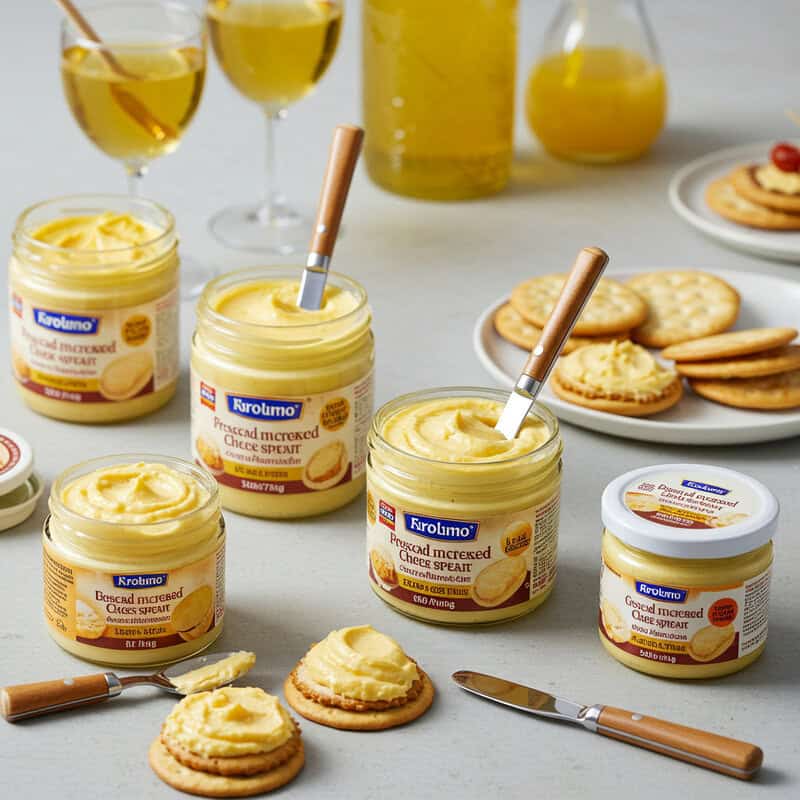
Processed cheese spreads are a popular addition to snacks and appetizers, but their high sodium and unhealthy fat content can put significant strain on the liver. These spreads are typically made with added salts, emulsifiers, and saturated fats to enhance flavor and texture, often making them much higher in sodium than natural cheeses. Excessive sodium intake can contribute to fluid retention and elevated blood pressure, both of which make the liver work harder to maintain metabolic balance (CDC: Sodium in the Food Supply). Furthermore, the saturated and sometimes trans fats in processed cheese spreads can promote fat accumulation in liver cells and increase the risk of non-alcoholic fatty liver disease (NAFLD) (NIH: Trans Fats and Liver Health).
While cheese can be part of a balanced diet, choosing natural cheeses in moderation is a healthier option. Natural cheeses are generally less processed and contain fewer additives, making them easier for the liver to process. Practicing moderation and watching portion sizes, as well as pairing cheese with whole grains or vegetables rather than processed crackers, can help reduce the liver’s burden and support overall health.
30. Milkshakes
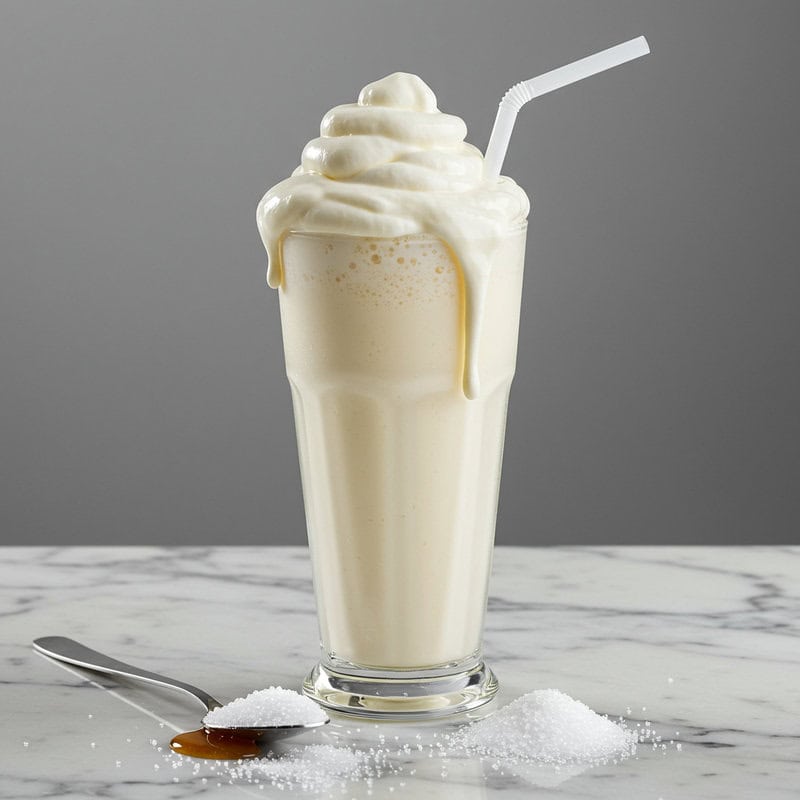
Milkshakes are a classic indulgent dessert, but their combination of ice cream, whole milk, and added syrups creates a beverage that is extremely high in calories, saturated fat, and sugar. A typical milkshake can contain more than 50 grams of sugar and hundreds of calories in a single serving. Such quantities of sugar, especially when consumed quickly in liquid form, cause a rapid spike in blood glucose and flood the liver with fructose. The liver responds by converting the surplus sugar into fat, which raises the risk of non-alcoholic fatty liver disease (NAFLD) and contributes to metabolic disturbances (NIH: Fructose and Liver Disease).
Regular consumption of milkshakes or similar high-sugar drinks can silently and progressively increase liver fat, even in individuals who are otherwise healthy. For a lighter dessert alternative, consider blending frozen fruit with a small amount of plain yogurt or milk for a naturally sweet and nutrient-rich treat. “Nice creams” made from pureed bananas or low-sugar smoothies are satisfying options that deliver flavor without overwhelming the liver with sugar and fat. Choosing these alternatives helps support liver health while still enjoying delicious, refreshing desserts (Cleveland Clinic: Healthy Ice Cream Alternatives).
31. Breakfast Sausages

Breakfast sausages are a staple of many morning meals, but they often contain high levels of sodium, preservatives, and saturated fat. The sodium and chemical additives used for flavor and preservation force the liver to work harder to detoxify and maintain the body’s fluid balance. Over time, regular consumption of such processed meats can increase the risk of liver inflammation, fat accumulation, and non-alcoholic fatty liver disease (NAFLD) (NIH: Processed Meat and Liver Disease). Saturated fats found in sausages further exacerbate the issue by promoting the build-up of fat in liver cells and contributing to chronic metabolic stress.
The cumulative effect of eating breakfast sausages frequently can silently undermine liver health, especially when combined with other processed foods in the diet. To reduce these risks, consider swapping traditional breakfast sausages for leaner protein options such as turkey or chicken sausage, eggs, or plant-based alternatives. Choosing products labeled “reduced sodium” and those with minimal additives can also support liver health. Emphasizing whole, minimally processed proteins at breakfast is a simple way to protect your liver and promote better overall well-being (Harvard Nutrition Source: Processed Meat).
32. Packaged Cookies
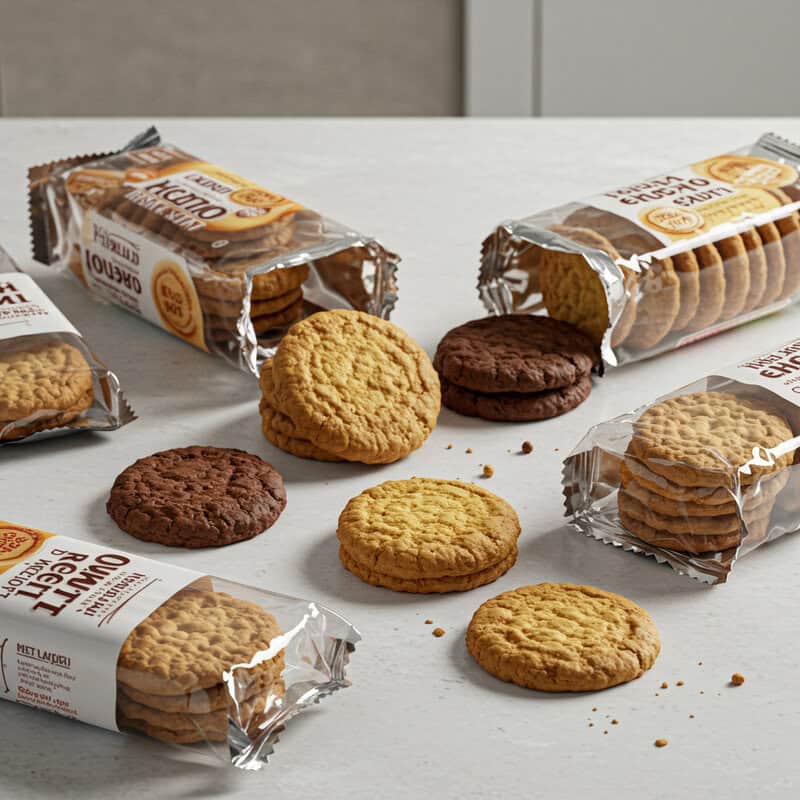
Packaged cookies are a convenient snack, but their extended shelf life often comes at the cost of high levels of added sugars and trans fats. These ingredients are used to enhance flavor, texture, and preservation, but they can be particularly taxing on the liver. Trans fats, commonly found in shelf-stable cookies through partially hydrogenated oils, have been linked to increased liver inflammation, fat accumulation, and a higher risk of non-alcoholic fatty liver disease (NAFLD) (NIH: Trans Fats and Liver Health). Excessive sugar content, especially from fructose and high fructose corn syrup, further exacerbates the problem by overwhelming the liver’s metabolic capacity and promoting fat storage (NIH: Fructose and Liver Disease).
The combination of sugar and trans fat in many packaged cookies makes them a silent contributor to liver stress when eaten regularly. To protect your liver, consider baking cookies at home using whole grain flours, minimal added sugar, and healthy fats such as olive oil or nut butter. Homemade options allow you to control ingredients, reduce unhealthy additives, and still enjoy sweet treats in moderation.
33. Flavored Oatmeal Packets
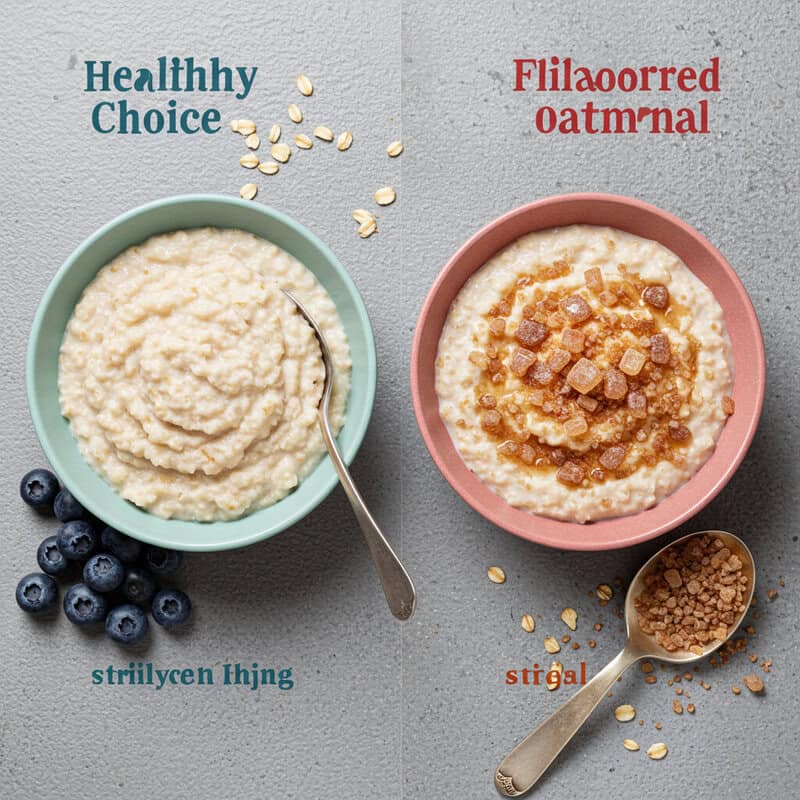
Flavored oatmeal packets are a quick and popular breakfast choice, but they often contain substantial amounts of added sugars, sometimes as much as 8-12 grams per serving. In contrast, plain oats are naturally sugar-free and provide heart-healthy fiber without the added sweeteners. The liver must process every surge of sugar, and repeated spikes from daily consumption of sweetened oatmeal can promote fat buildup and increase the risk of non-alcoholic fatty liver disease (NAFLD) (NIH: Fructose and Liver Disease). Frequent sugar overloads tax the liver’s ability to metabolize nutrients efficiently, potentially leading to chronic metabolic issues over time.
Opting for plain oats is a simple way to avoid unnecessary sugars and better support liver health. You can easily customize plain oatmeal at home by adding fresh or dried fruit, a sprinkle of cinnamon, or a small amount of nuts for natural sweetness and extra nutrition. This approach not only reduces your sugar intake but also increases the fiber, antioxidants, and healthy fats in your breakfast. Reading labels carefully and choosing unsweetened oat products are effective strategies for keeping your morning routine liver-friendly (Harvard Nutrition Source: Oats).
34. BBQ Sauces
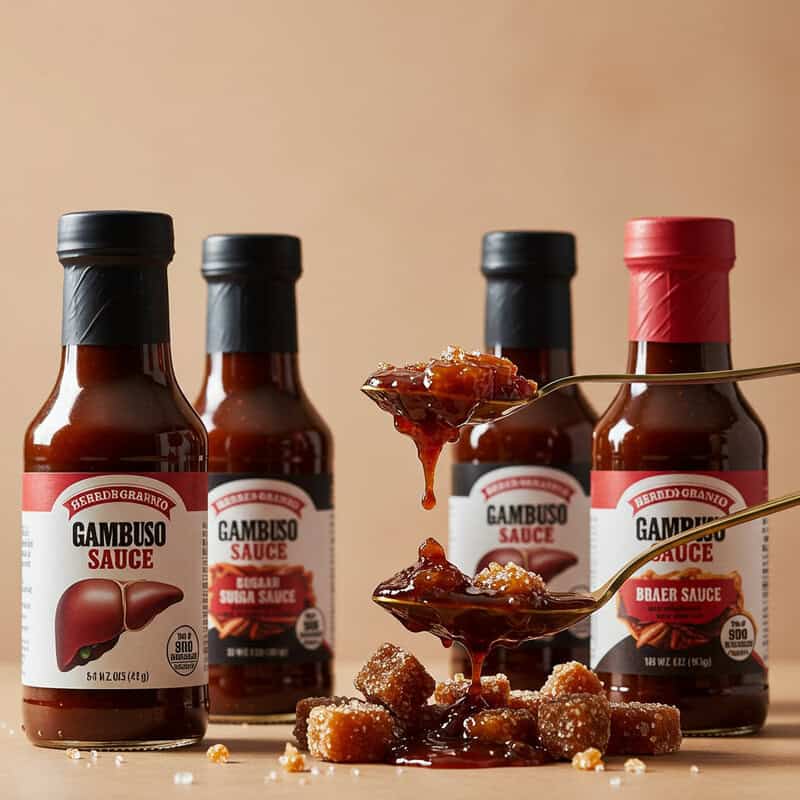
Commercial barbecue sauces are a flavorful addition to grilled meats and vegetables, but they are often loaded with hidden sugars and sodium. A single tablespoon of store-bought BBQ sauce can contain as much as 6-8 grams of added sugar, usually in the form of high fructose corn syrup or molasses. The liver must metabolize these sugars, and frequent consumption can lead to fat accumulation within liver cells, increasing the risk of non-alcoholic fatty liver disease (NAFLD) (NIH: Fructose and Liver Disease). High sodium content—commonly over 300 milligrams per tablespoon—can further strain the liver by contributing to fluid retention and elevated blood pressure (CDC: Sodium in Food).
Because barbecue sauce is often slathered generously, the cumulative sugar and salt intake can quickly add up, quietly impacting liver and metabolic health. To make your meals healthier, consider preparing homemade BBQ sauces using tomato paste, vinegar, herbs, and spices, with minimal added sugar and salt. This not only allows you to control the ingredients but also preserves the flavor you love while protecting your liver from stealthy dietary pitfalls.
35. Muffins

Bakery muffins, while often marketed as a wholesome breakfast or snack, are frequently closer to cupcakes in terms of sugar and fat content. Many commercial muffins contain large quantities of refined flour, added sugars, and oils or butter, with a single muffin sometimes exceeding 30 grams of sugar and packing hundreds of calories. Such a dense combination of sugars and fats places a significant metabolic burden on the liver, which must work overtime to process these nutrients, converting excess sugar into fat and increasing the risk of non-alcoholic fatty liver disease (NAFLD) (NIH: Fructose and Liver Disease). Over time, frequent consumption of bakery muffins can silently contribute to liver fat accumulation and metabolic disturbances.
Healthier alternatives include baking muffins at home, where you can control the type and amount of sweetener, use whole grain flours, and incorporate fruits or nuts for added nutrition and fiber. Practicing portion control is also important—mini muffins or half portions can satisfy cravings without overloading your system. Being mindful of ingredients and serving sizes helps you enjoy the occasional muffin without the hidden risk of liver stress (Harvard Nutrition Source: Healthy Snacks).
36. Instant Noodles
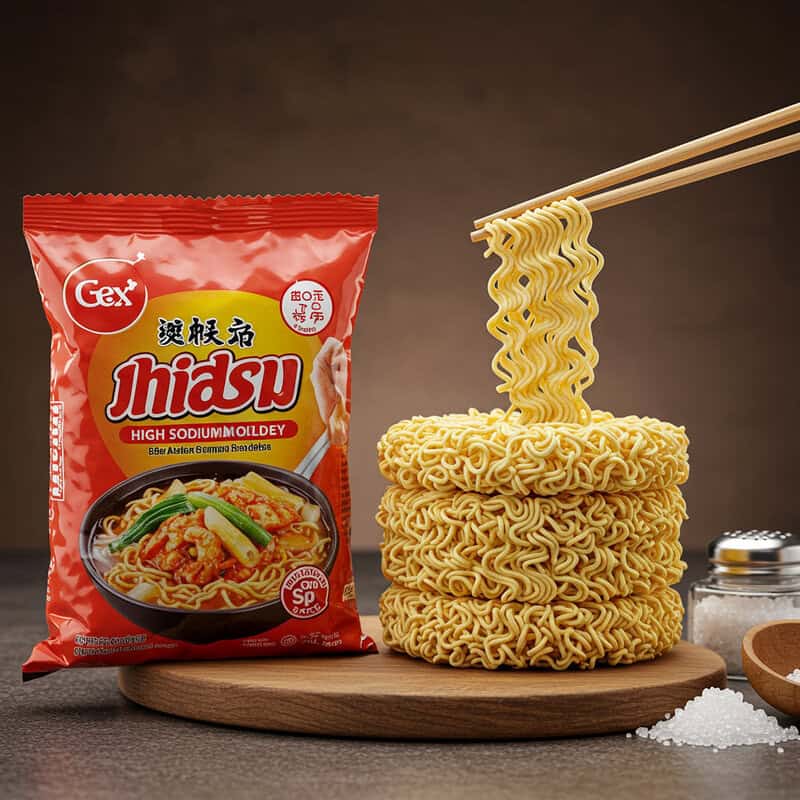
Instant noodles are a convenient and inexpensive meal option, but they often come with high levels of sodium, unhealthy fats, and preservatives. A single serving can contain over 800 milligrams of sodium, which can quickly exceed recommended daily limits when combined with other foods. Excess sodium intake is known to increase fluid retention and blood pressure, placing additional strain on the liver and kidneys (CDC: Sodium in Food). Furthermore, many instant noodles are fried during processing, adding saturated fats that promote fat accumulation in the liver and increase the risk of non-alcoholic fatty liver disease (NAFLD) (NIH: Dietary Fats and Liver Disease).
Preservatives and artificial flavor enhancers, commonly found in the seasoning packets, further tax the liver’s ability to detoxify and metabolize additives. Regular consumption of instant noodles can silently contribute to cumulative liver stress and metabolic issues. For a healthier approach, choose lower-sodium brands, discard or use only part of the seasoning packet, and add fresh vegetables or lean proteins. These modifications not only improve nutrition but also help reduce the potential harm to your liver over time.
37. Donuts

Donuts are a beloved sweet treat, but their deep-fried preparation and high sugar content make them particularly taxing on the liver. Each donut typically combines refined flour, large amounts of added sugars, and is cooked in oils high in saturated or trans fats. This combination delivers a rapid influx of glucose and unhealthy fats, which the liver must process and store. Over time, frequent consumption leads to fat accumulation in the liver, increasing the risk of non-alcoholic fatty liver disease (NAFLD) and other metabolic disorders (NIH: Dietary Fats and Liver Disease; NIH: Fructose and Liver Disease).
The deep-frying process also introduces unhealthy compounds that further challenge the liver’s detoxification abilities. Regularly indulging in donuts, whether as a breakfast staple or snack, can silently strain liver function and contribute to long-term health issues. To minimize these risks, it’s best to reserve donuts for rare occasions and savor them in moderation. Opting for healthier baked alternatives or homemade versions with less sugar and fat can help satisfy cravings while protecting your liver.
38. Canned Fruit in Syrup

Canned fruit packed in syrup may seem like a convenient way to enjoy fruit year-round, but the sugary liquid adds a significant amount of extra sugar to your diet. Unlike the natural sugars found in fresh fruit, the syrup—often made from high fructose corn syrup or cane sugar—requires the liver to process an additional sugar load, which can be rapidly converted into fat. Regular intake of these added sugars is linked to an increased risk of non-alcoholic fatty liver disease (NAFLD) and metabolic disturbances (NIH: Fructose and Liver Disease).
In contrast, fresh fruit provides fiber, vitamins, and antioxidants without the burden of added sugars, allowing the liver to process natural fructose at a manageable rate. When choosing canned fruit, opt for varieties packed in water or natural juice rather than syrup. If only syrup-packed fruit is available, rinsing the fruit under water can help remove some of the excess sugar. Making these small adjustments significantly reduces unnecessary sugar intake and supports better liver health. Prioritizing fresh, frozen, or fruit canned in water is a simple way to enjoy the benefits of fruit without overloading your liver (Harvard Nutrition Source: Fruit).
39. Hot Dogs

Hot dogs are a classic convenience food, but their processed nature makes them a poor choice for liver health. They are typically made from processed meats that are high in saturated fats, sodium, and chemical additives such as nitrates and nitrites. These preservatives are used to enhance flavor and extend shelf life, but they require the liver to work harder to detoxify and eliminate these substances from the body. Excessive sodium intake from hot dogs can also contribute to fluid retention and elevate blood pressure, further straining liver and kidney function (CDC: Sodium in Food).
Frequent consumption of processed meats like hot dogs has been linked to a higher risk of non-alcoholic fatty liver disease (NAFLD), liver inflammation, and other chronic metabolic issues (NIH: Processed Meat and Liver Disease). To reduce the impact on your liver, it’s advisable to limit intake of hot dogs and other highly processed meats, opting instead for lean, fresh meats or plant-based protein sources. Occasional enjoyment in moderation is unlikely to cause harm, but making processed meats a regular dietary staple can silently contribute to long-term liver strain and health complications.
40. Flavored Rice Mixes
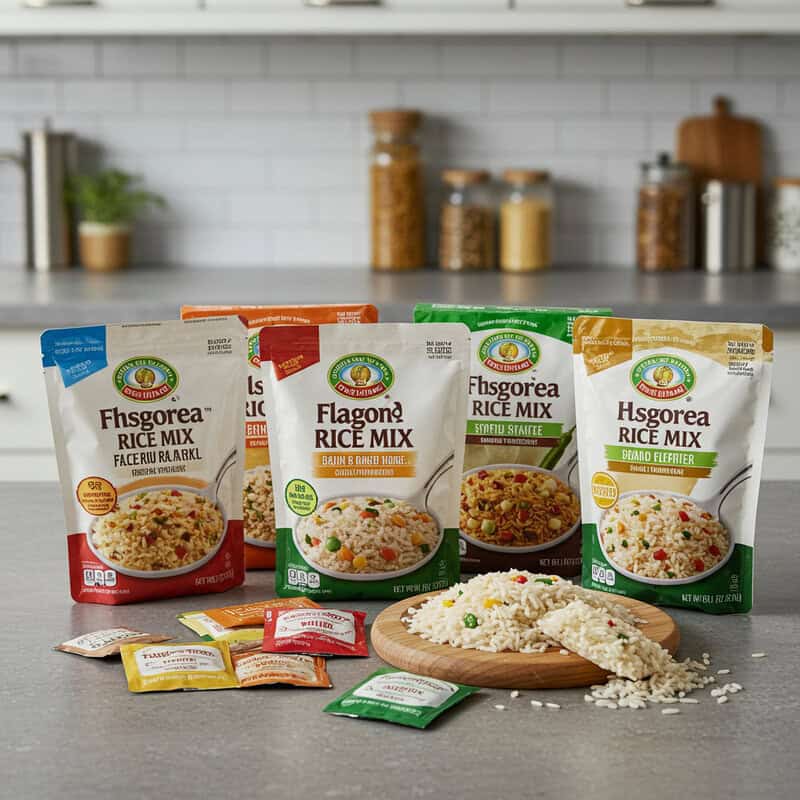
Flavored rice mixes, commonly found in boxed or pouch form, offer convenience but often at the expense of liver health. These products are typically made with refined white rice, which is quickly digested and absorbed, leading to blood sugar spikes that the liver must process. In addition to the refined grains, flavored rice mixes often contain high levels of sodium, artificial flavorings, and preservatives. The excessive sodium can contribute to fluid retention and increased blood pressure, making the liver work harder to maintain metabolic balance (CDC: Sodium in Food). Artificial additives also require detoxification by the liver, adding to its workload and potentially contributing to long-term strain.
Consistently relying on these convenience foods can promote fat accumulation in the liver and increase the risk of non-alcoholic fatty liver disease (NAFLD) (NIH: Refined Grains and Metabolic Health). For a healthier alternative, prepare plain brown or white rice at home and enhance it with fresh herbs, lemon zest, or a splash of olive oil. This not only reduces sodium and eliminates unnecessary additives but also allows you to enjoy flavor and nutrition while supporting your liver’s long-term health.
41. Frozen Waffles and Pancakes
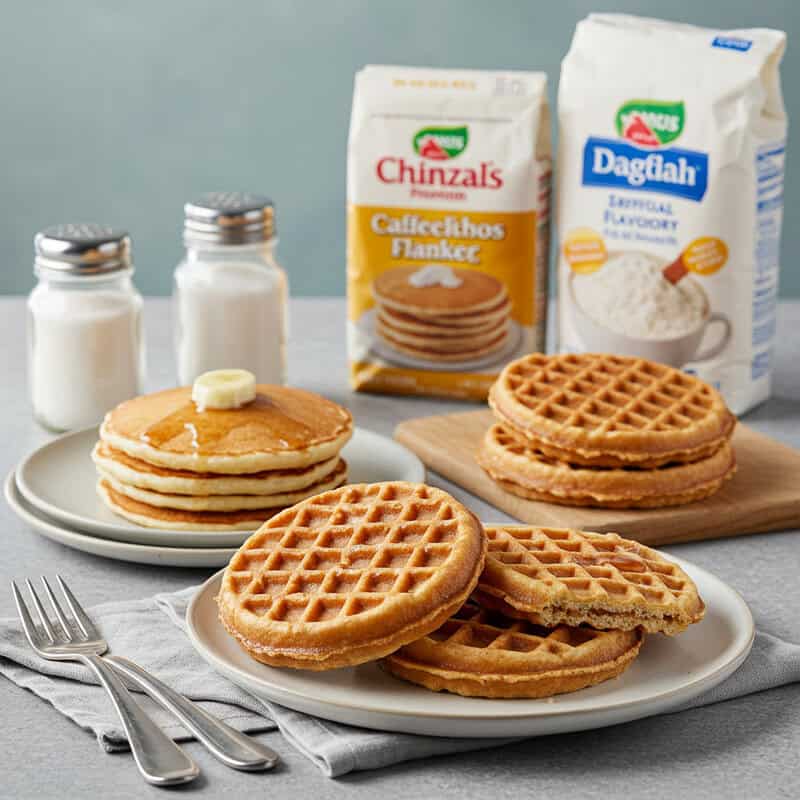
Frozen waffles and pancakes are a staple in many breakfast routines due to their convenience, but they often come with a considerable amount of added sugars, preservatives, and refined flour. Most commercial brands use white flour, which is quickly digested and absorbed, leading to spikes in blood sugar that the liver must work to regulate. Added sugars and artificial flavors are common in these products, further increasing the burden on the liver by promoting fat storage and potentially contributing to non-alcoholic fatty liver disease (NAFLD) (NIH: Fructose and Liver Disease).
Preservatives and additives used to maintain shelf life also require the liver to process and detoxify extra chemicals, silently increasing its workload. Regularly consuming frozen waffles and pancakes can thus strain the liver over time, especially when paired with sugary toppings like syrup or whipped cream. A healthier approach is to make waffles and pancakes fresh at home using whole grain flours, minimal sweeteners, and natural ingredients. Homemade versions provide more fiber, fewer additives, and allow for creative, nutritious toppings, making breakfast both delicious and liver-friendly (Harvard Nutrition Source: Whole Grains).
42. Canned Chili
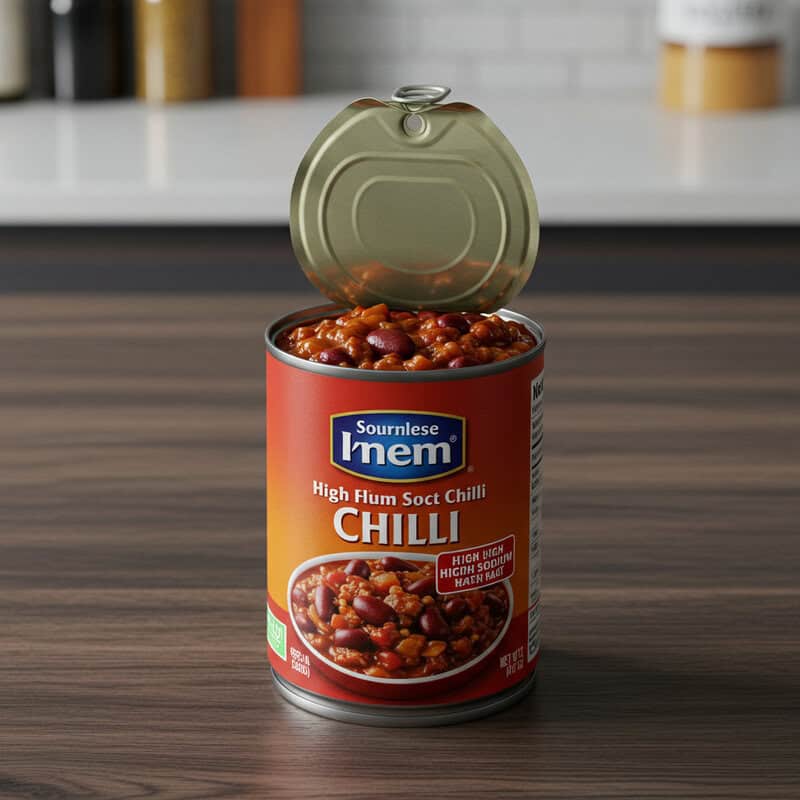
Canned chili is a convenient comfort food, but it is often loaded with high levels of sodium, preservatives, and saturated fats. Many commercial varieties contain more than 800 milligrams of sodium per serving, which can quickly add up and exceed daily recommended limits. Excessive sodium forces the liver and kidneys to work harder to maintain fluid and metabolic balance, while preservatives and artificial flavorings present additional detoxification challenges for the liver (CDC: Sodium in Food).
Furthermore, canned chili frequently features fatty cuts of beef, pork, or processed meats, increasing the saturated fat content and further promoting fat accumulation within liver cells. Regular consumption of such high-fat, high-sodium foods can elevate the risk of non-alcoholic fatty liver disease (NAFLD) and other metabolic disorders (NIH: Processed Meat and Liver Disease). For a healthier alternative, prepare chili at home using lean meats such as turkey or chicken, an abundance of beans, and fresh vegetables. This approach not only limits sodium and saturated fat but also allows you to control ingredients, supporting both liver health and overall nutrition.
43. Sweetened Applesauce
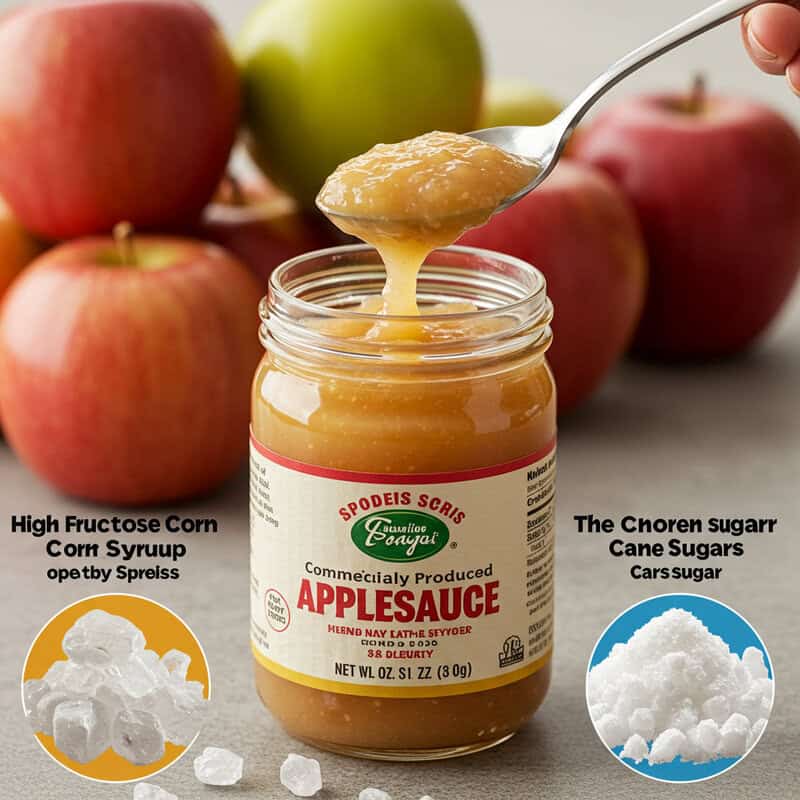
Commercially produced applesauce is often marketed as a healthy snack, but many varieties contain significant amounts of added sugars. These added sugars—frequently in the form of high fructose corn syrup or cane sugar—can elevate the sugar content of a single serving to rival that of many desserts. When consumed regularly, excess sugar places a burden on the liver, which must convert the surplus fructose into fat, increasing the risk of non-alcoholic fatty liver disease (NAFLD) and other metabolic issues (NIH: Fructose and Liver Disease).
In contrast, unsweetened applesauce contains only the natural sugars found in apples and is a much better choice for liver health. It provides fiber and antioxidants without the unnecessary sugar load, allowing the liver to process nutrients more efficiently. To make the healthiest choice, read labels carefully and select “no sugar added” or “unsweetened” applesauce. Alternatively, making applesauce at home by simply cooking and pureeing apples lets you control the ingredients and avoid hidden sugars altogether. By choosing unsweetened varieties, you can enjoy the natural sweetness and nutritional benefits of apples without putting extra stress on your liver (Harvard Nutrition Source: Fruit).
44. Fruit Snacks
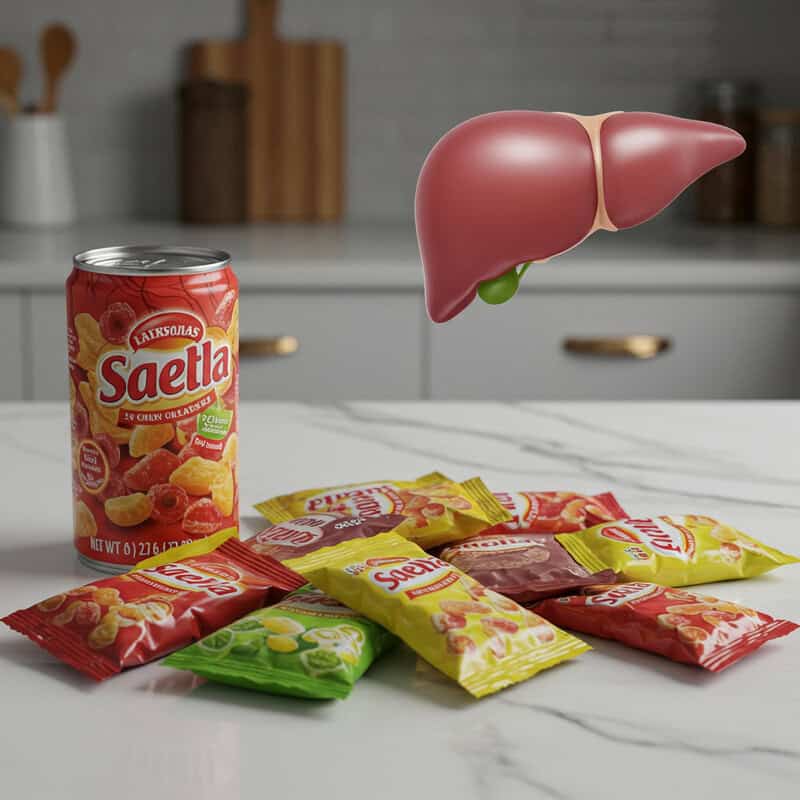
Fruit snacks are often marketed as a healthy option for children and adults alike, but most commercial varieties are far closer to candy than to real fruit. These snacks are typically made from concentrated fruit juices, purees, and large amounts of added sugars or corn syrup. The concentrated sugars are rapidly absorbed and processed by the liver, which can quickly become overwhelmed when fruit snacks are consumed regularly. This extra sugar load promotes fat accumulation in the liver and increases the risk of developing non-alcoholic fatty liver disease (NAFLD), especially when eaten as a frequent snack (NIH: Fructose and Liver Disease).
Despite their fruity packaging, processed fruit snacks generally lack the fiber, vitamins, and beneficial plant compounds found in whole fruit. As a result, they provide little satiety and can easily lead to overconsumption of sugar. For a healthier and truly nourishing option, choose real, whole fruits such as apples, berries, or orange segments. Whole fruits deliver natural sweetness along with fiber and micronutrients that support liver health and help regulate sugar absorption. Making the switch to real fruit for snacks is a simple step that can greatly reduce the liver’s burden and improve overall wellness (Harvard Nutrition Source: Fruit).
45. Bottled Smoothies
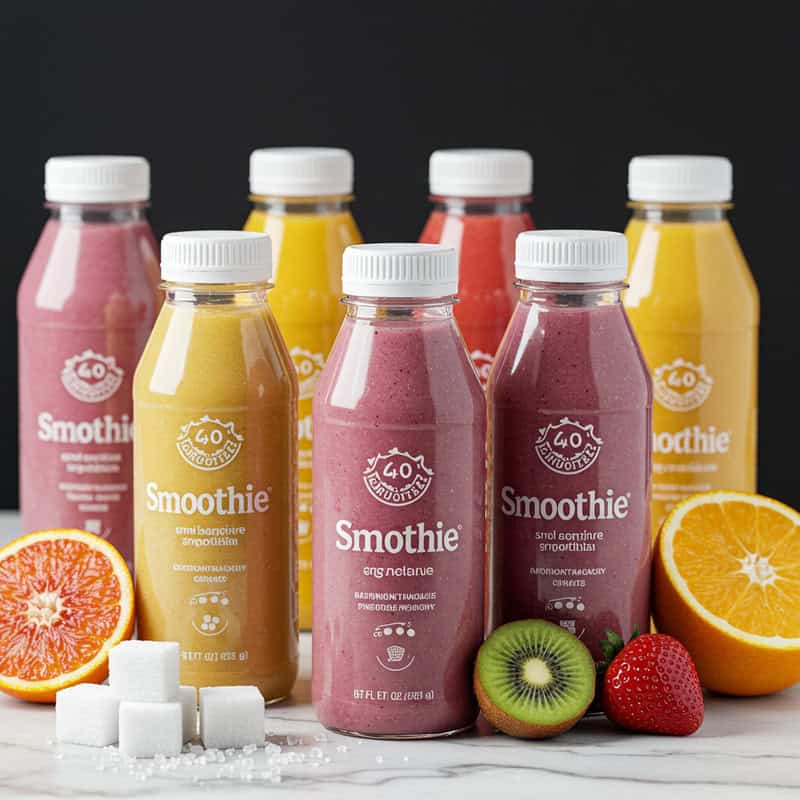
Bottled smoothies are often marketed as a convenient and nutritious choice, but many commercial varieties contain surprisingly high amounts of added sugars and calories. Some bottled smoothies feature fruit juice concentrates, sweetened yogurts, or syrups, which can elevate the sugar content to 30 grams or more per bottle—sometimes rivaling or exceeding that of soft drinks. This sugar overload places a significant burden on the liver, forcing it to metabolize the excess fructose and often converting it into fat, thereby increasing the risk of non-alcoholic fatty liver disease (NAFLD) (NIH: Fructose and Liver Disease). The lack of fiber in many bottled smoothies also contributes to rapid sugar absorption and reduced satiety.
In contrast, homemade smoothies made with whole fruits, unsweetened yogurt, leafy greens, and seeds or nuts offer a more balanced nutritional profile—higher in fiber, lower in added sugars, and richer in antioxidants. If choosing a store-bought option, it is important to check nutrition labels for total sugar and calorie content and to select varieties with no added sugars or minimal sweeteners. Preparing smoothies at home gives you control over ingredients and helps protect your liver from the hidden risks lurking in many commercial drinks (Harvard Nutrition Source: Healthy Drinks).
46. Sweetened Condensed Milk
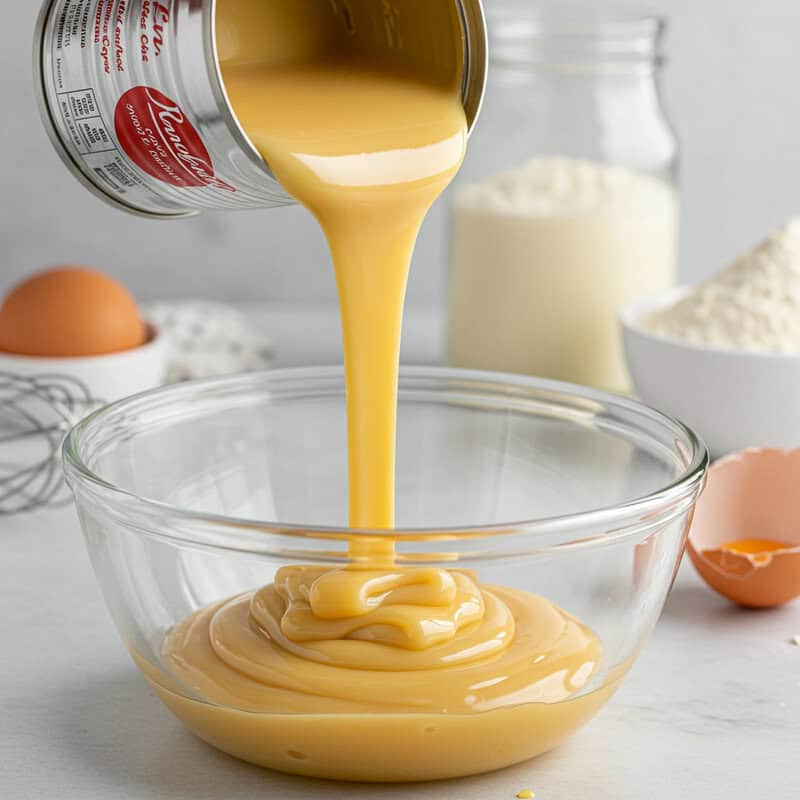
Sweetened condensed milk is a staple in many desserts and beverages, valued for its creamy texture and intense sweetness. However, this product is made by removing most of the water from milk and adding large quantities of sugar, resulting in a highly concentrated source of both calories and simple sugars. Just two tablespoons of sweetened condensed milk can contain over 20 grams of sugar, much of it in the form of sucrose and lactose. When consumed, these sugars are rapidly absorbed and processed by the liver, which converts excess amounts into fat. This process can contribute to the accumulation of liver fat and increase the risk of non-alcoholic fatty liver disease (NAFLD), especially with regular or excessive use (NIH: Fructose and Liver Disease).
Because of its intense sugar concentration, sweetened condensed milk should be used sparingly, reserved for special recipes rather than as a daily ingredient. Substituting with evaporated milk or using a smaller quantity in recipes can help reduce overall sugar intake. Practicing moderation with sweetened condensed milk is a simple way to enjoy its flavor without overwhelming your liver or compromising long-term health.
47. Trail Mixes with Candy
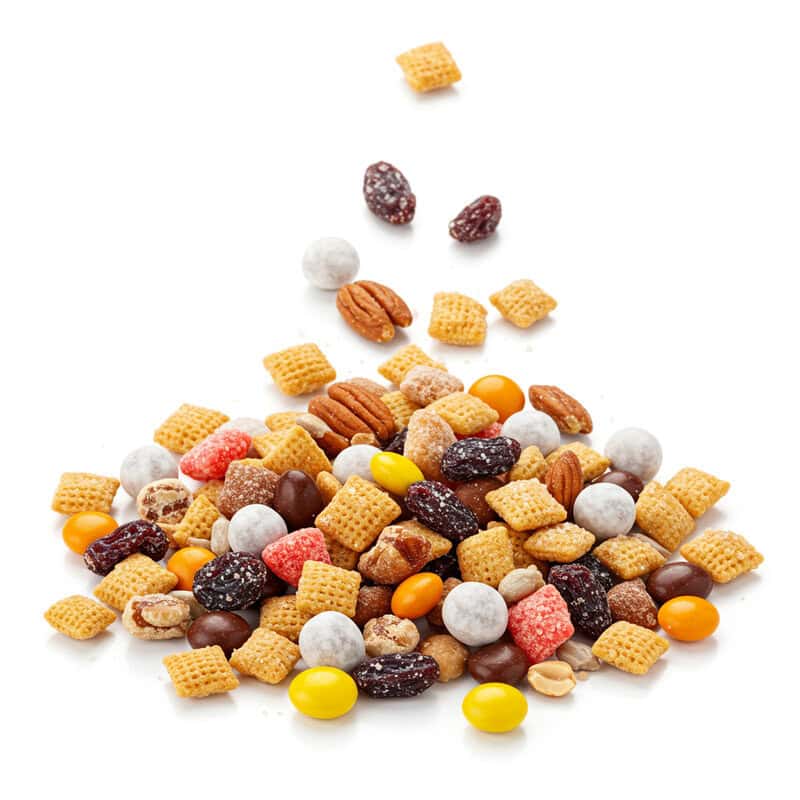
Trail mixes featuring chocolate candies, yogurt-coated pieces, and sweetened dried fruit may seem like a nutritious snack, but their added sugars and fats can undermine liver health. While nuts and seeds provide healthy fats and protein, the inclusion of candy and sugar-coated items significantly increases the overall sugar content. Each handful can deliver a sugar and calorie load comparable to that of candy bars, which the liver must process. The liver converts excess sugars—especially fructose—into fat, promoting the development of non-alcoholic fatty liver disease (NAFLD) when such snacks are eaten often (NIH: Fructose and Liver Disease).
Yogurt coatings and chocolate pieces also add saturated fats and further processed ingredients, increasing the strain on the liver’s detoxification and fat-metabolizing functions. To enjoy the benefits of trail mix without the drawbacks, make your own blend at home using unsalted nuts, seeds, and a modest amount of unsweetened dried fruit. This DIY approach allows you to control portion sizes and avoid unnecessary sugars and processed fats. Choosing natural, minimally processed ingredients supports both satiety and liver health, making trail mix a truly wholesome snack (Harvard Nutrition Source: Nuts and Peanuts).
48. Sweetened Tea Beverages
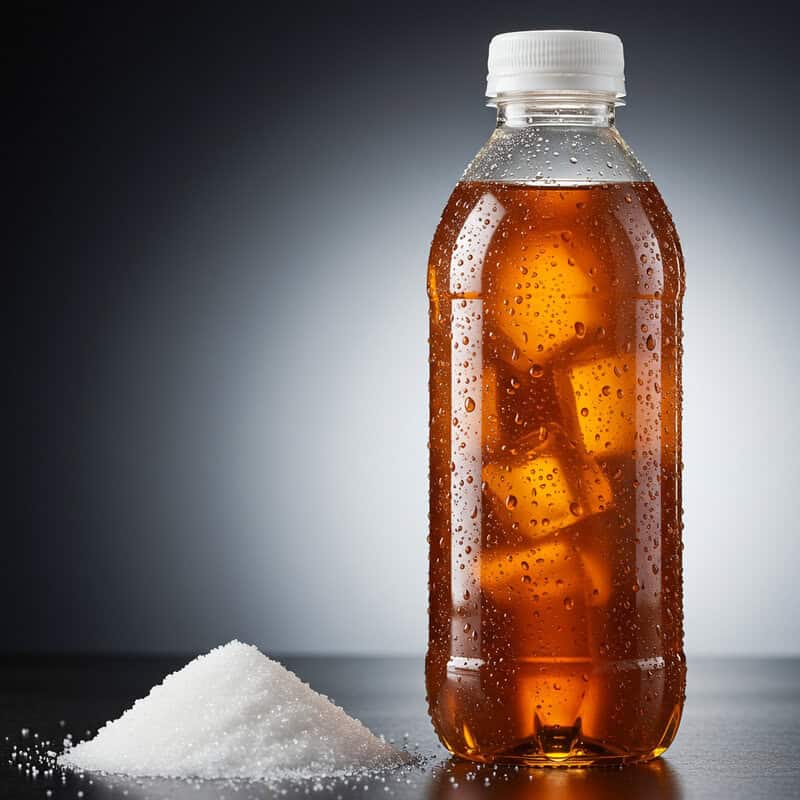
Bottled sweet tea and other commercially prepared tea beverages are often loaded with added sugars, making them a significant source of hidden calories in the diet. A single 16-ounce bottle of sweet tea can contain upwards of 40 grams of sugar—an amount comparable to many soft drinks. When consumed, this sugar rush is rapidly metabolized by the liver, which must convert the surplus fructose into fat. Over time, frequent intake of sweetened tea beverages can increase the risk of non-alcoholic fatty liver disease (NAFLD) and other metabolic disturbances (NIH: Fructose and Liver Disease).
The popularity of sweetened teas, particularly in warm climates or as a refreshing alternative to soda, can make it easy to overlook their sugar content. To support liver health, opt for unsweetened tea or lightly sweetened homemade versions where you can control the amount of sugar added. Herbal teas, green teas, and black teas served without sweeteners are naturally calorie-free and provide beneficial antioxidants. Reading nutrition labels and choosing bottled teas with little or no added sugar is a simple step toward reducing unnecessary sugar intake and protecting your liver’s long-term health (Harvard Nutrition Source: Healthy Drinks).
49. Fruit-Flavored Gelatin Desserts

Fruit-flavored gelatin desserts are popular for their bright colors and sweet taste, especially among children, but they are typically made with high amounts of added sugars and artificial colors. The sugars used in these desserts, such as corn syrup or refined sugar, are rapidly absorbed and processed by the liver. When consumed frequently, these added sugars can promote fat accumulation within liver cells and increase the risk of non-alcoholic fatty liver disease (NAFLD) (NIH: Fructose and Liver Disease). Artificial colors and flavors, while considered safe in small amounts, may require additional detoxification work from the liver, especially when consumed regularly.
Because these desserts are low in fiber and nutrients, they offer little satiety and can easily become a source of excess, empty calories. For a healthier alternative, consider making homemade gelatin using pure fruit juice and minimal added sweetener, allowing you to enjoy the texture and flavor without burdening the liver with extra sugars and synthetic additives. Choosing natural ingredients and controlling portion sizes is a simple way to enjoy a sweet treat while supporting your liver’s health and overall well-being (Harvard Nutrition Source: Added Sugar).
50. Commercial Popcorn (Movie Theater, Microwave)

Commercial popcorn, whether purchased at movie theaters or prepared using microwave packets, often contains much more than just popped corn. These products are typically loaded with artificial butter flavorings, high levels of salt, and sometimes even added sugars. The artificial flavorings used in movie theater popcorn, such as diacetyl and other chemical additives, require the liver to detoxify and metabolize extra compounds that would not be present in homemade popcorn. Excessive salt intake contributes to fluid retention and can strain the liver and kidneys, especially when movie theater servings are supersized (CDC: Sodium in Food). In some varieties, added sugars or caramel coatings further increase the caloric and metabolic burden on the liver.
The cumulative effect of regularly consuming commercial popcorn with these extra ingredients can promote liver inflammation and fat accumulation, particularly when paired with other processed snacks. For a healthier alternative, make popcorn at home using plain kernels, a small amount of heart-healthy oil, and minimal salt. You can add flavor with herbs, spices, or nutritional yeast for a savory kick without overwhelming your liver. Homemade popcorn is high in fiber and can satisfy snack cravings without the risks posed by commercial varieties (Harvard Nutrition Source: Whole Grains).
Conclusion
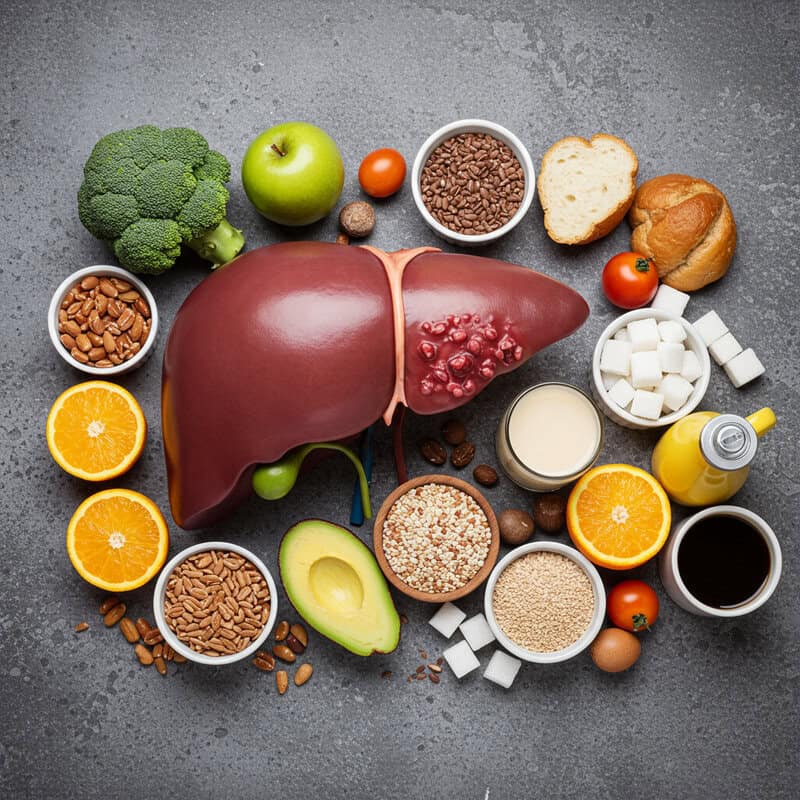
Routine exposure to sugar-laden, processed, and additive-rich foods silently undermines liver health, increasing the risk of conditions like non-alcoholic fatty liver disease (NAFLD). The liver’s vital role in metabolism and detoxification makes its protection urgent for long-term well-being. Practical steps include prioritizing whole, minimally processed foods, reading nutrition labels, and limiting added sugars and unhealthy fats. Regular check-ups and liver enzyme testing can help detect early signs of liver stress (CDC: Liver Disease Statistics). Making mindful dietary adjustments and seeking guidance from a healthcare provider support liver health and overall wellness, empowering you to prevent silent, progressive damage (Mayo Clinic: Fatty Liver Disease).
Disclaimer
The information provided in this article is for general informational purposes only. While we strive to keep the information up-to-date and correct, we make no representations or warranties of any kind, express or implied, about the completeness, accuracy, reliability, suitability, or availability with respect to the article or the information, products, services, or related graphics contained in the article for any purpose. Any reliance you place on such information is therefore strictly at your own risk.
In no event will we be liable for any loss or damage including without limitation, indirect or consequential loss or damage, or any loss or damage whatsoever arising from loss of data or profits arising out of, or in connection with, the use of this article.
Through this article you are able to link to other websites which are not under our control. We have no control over the nature, content, and availability of those sites. The inclusion of any links does not necessarily imply a recommendation or endorse the views expressed within them.
Every effort is made to keep the article up and running smoothly. However, we take no responsibility for, and will not be liable for, the article being temporarily unavailable due to technical issues beyond our control.





